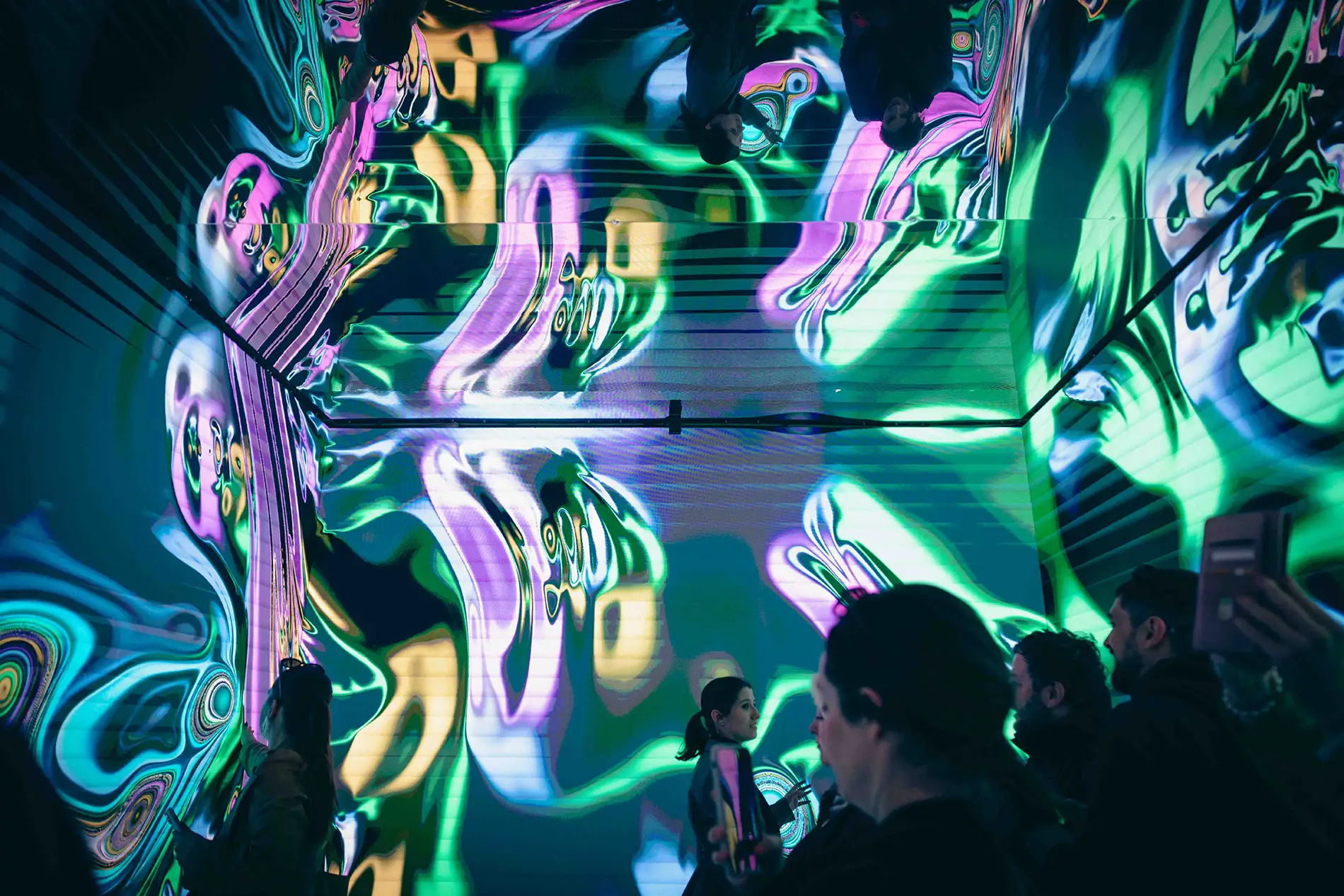The Milan Furniture Salon, flanked by the vibrant Design Week, once again proved to be the international epicenter of the industry this spring with over 300,000 visitors. It expressed the extent to which design today has become a mirror of our desires, needs and technological possibilities - against the backdrop of major global uncertainties.
Text: Susanne Schaller
In the Castello Sforzesco, visitors stand in semi-darkness in front of Michelangelo Buonarroti's Pietà in contemplation. Behind them, the poignant live voices of Arvo Pärt's Stabat Mater can be heard, while magical plays of light dance across the unfinished forms of the masterpiece: The performance "Mother" by American director Robert Wilson stands as the prelude to this year's Milan Design Week - an opening with which the Salone deliberately presents itself as a cultural synthesis of the arts under the motto "Thought for Humans".
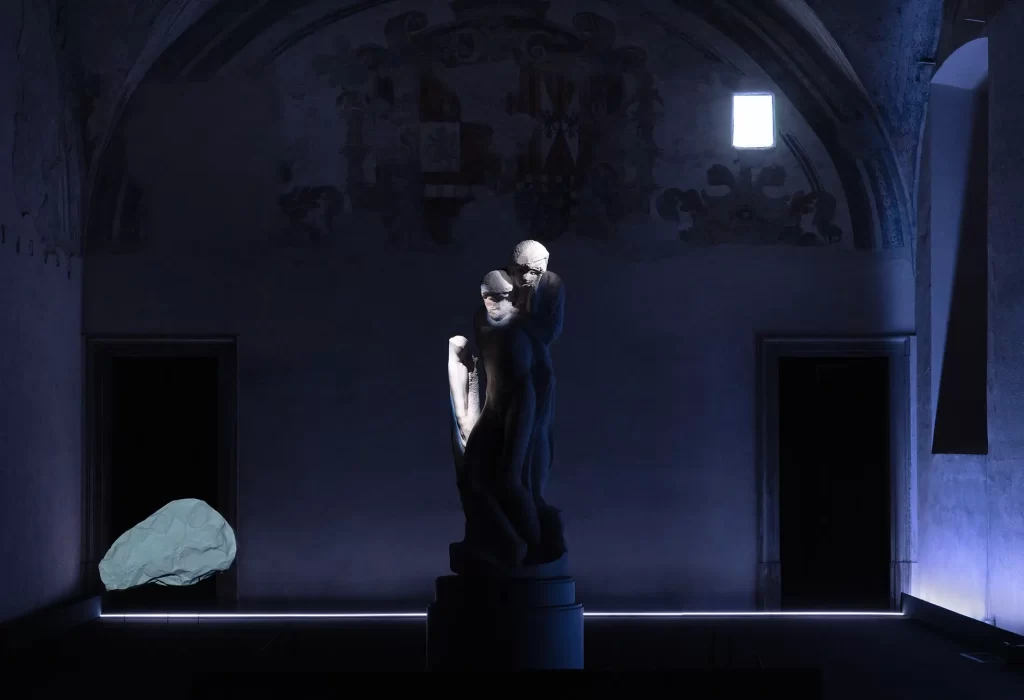
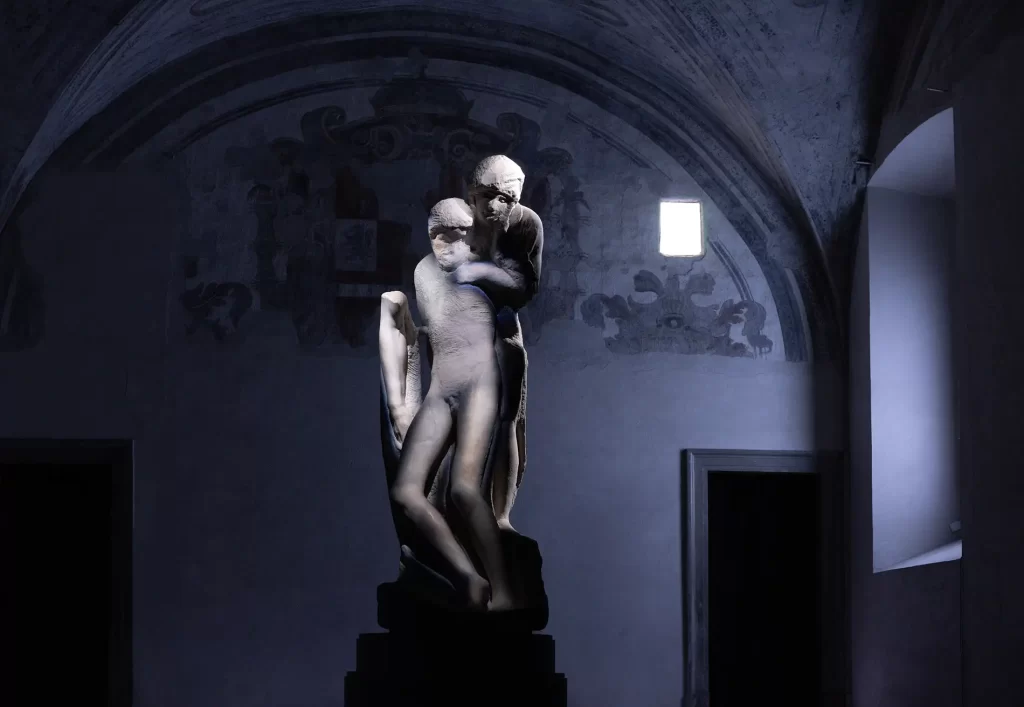
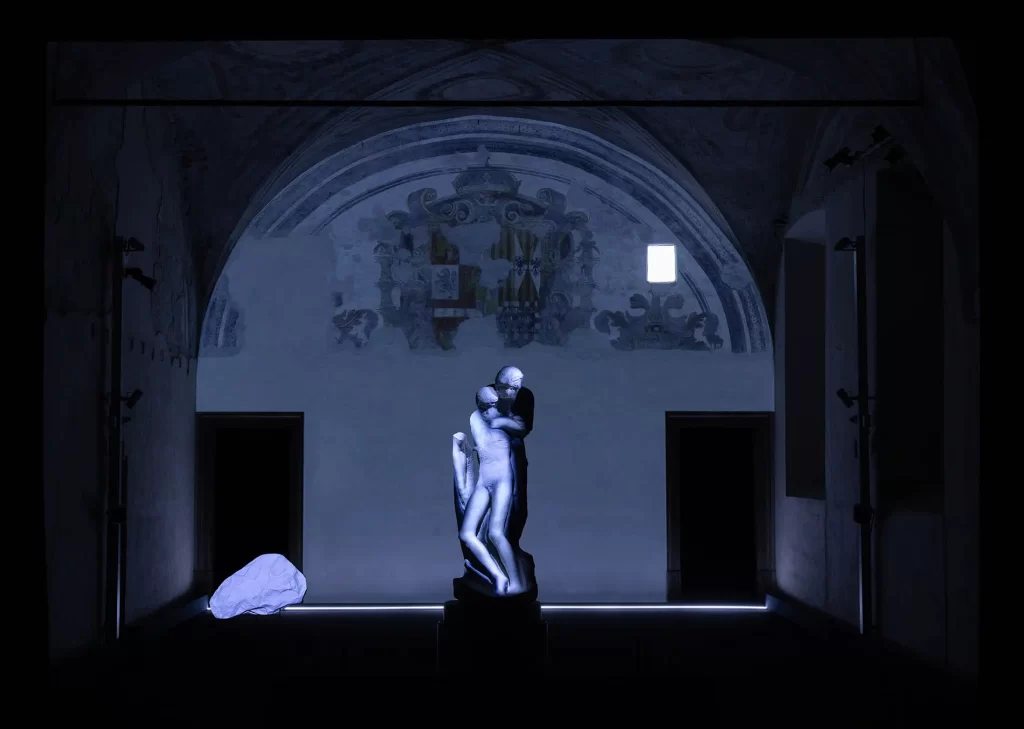
Since its foundation in 1961, when a group of resourceful Italian entrepreneurs launched the furniture fair - inspired by the positive international response to the first German exhibition at Koelnmesse the previous year - the Salone has developed into a global flagship for design culture year after year.
When talking about the highlights of this year's Fiera in Milano Rho, the first term that comes to mind is "La dolce attesa". A production by Italian director Paolo Sorrentino dedicated to waiting and pausing - "an invitation to relax in a floating space, without fear and anxiety", as scenographer Margherita Palli describes it. Two guests at a time - the seats were fully booked within a very short time - boarded a small elevator that whisked them away to another reality. There, "nurses", actresses from the Teatro Piccolo, guided them with gentle gestures to chaises-longues, where they tasted the beauty of the moment.
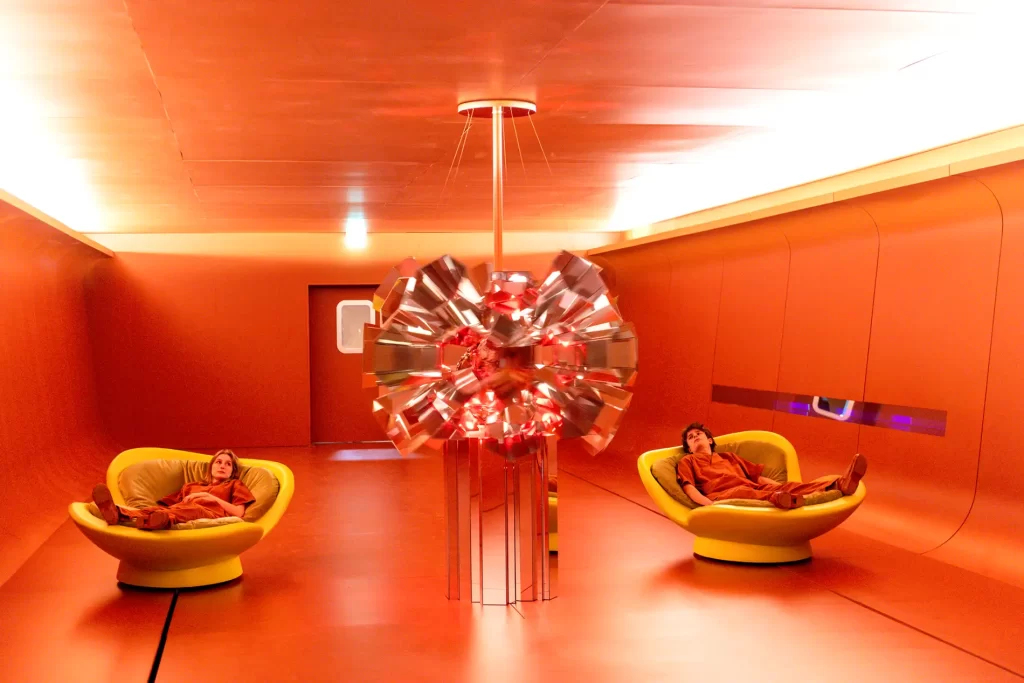
However, most trade fair visitors could hardly wait to start the endless marathon with 2100 exhibitors from 37 countries - in search of the latest trends and inspiration.
Here is a brief overview of the chronicle:
Rich, deep colors are dominant - Barolo red, earthy moss green and warm cognac and amber nuances. Brocade-like fabrics in muted colors, pastel accents, velvety surfaces and sculptural silhouettes - especially in upholstered furniture - are making a comeback. Alongside this new, organic opulence, there is a trend towards "soft minimalism", which has left the cool Scandinavian style understatement behind: Clear lines remain, but are softened by natural materials and soft textures.
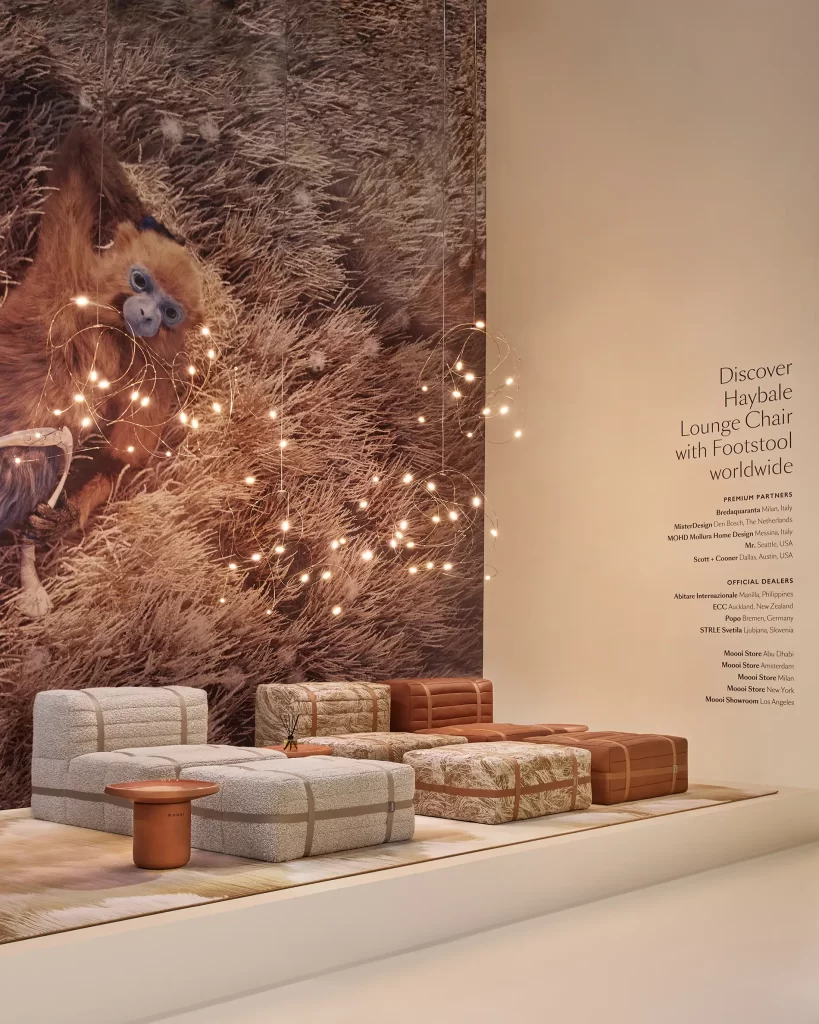
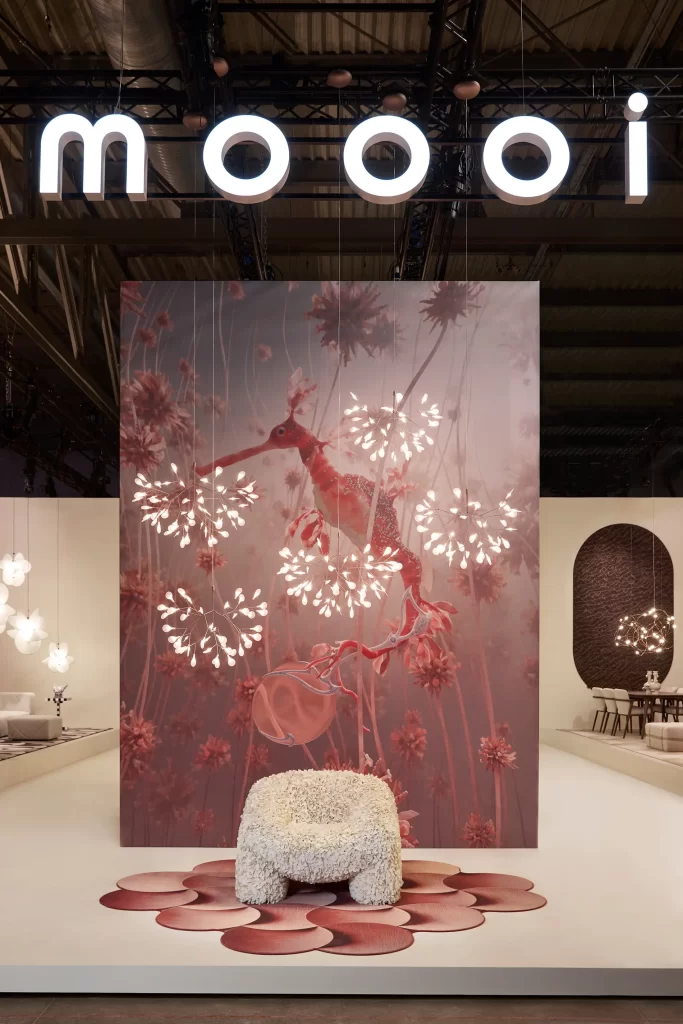
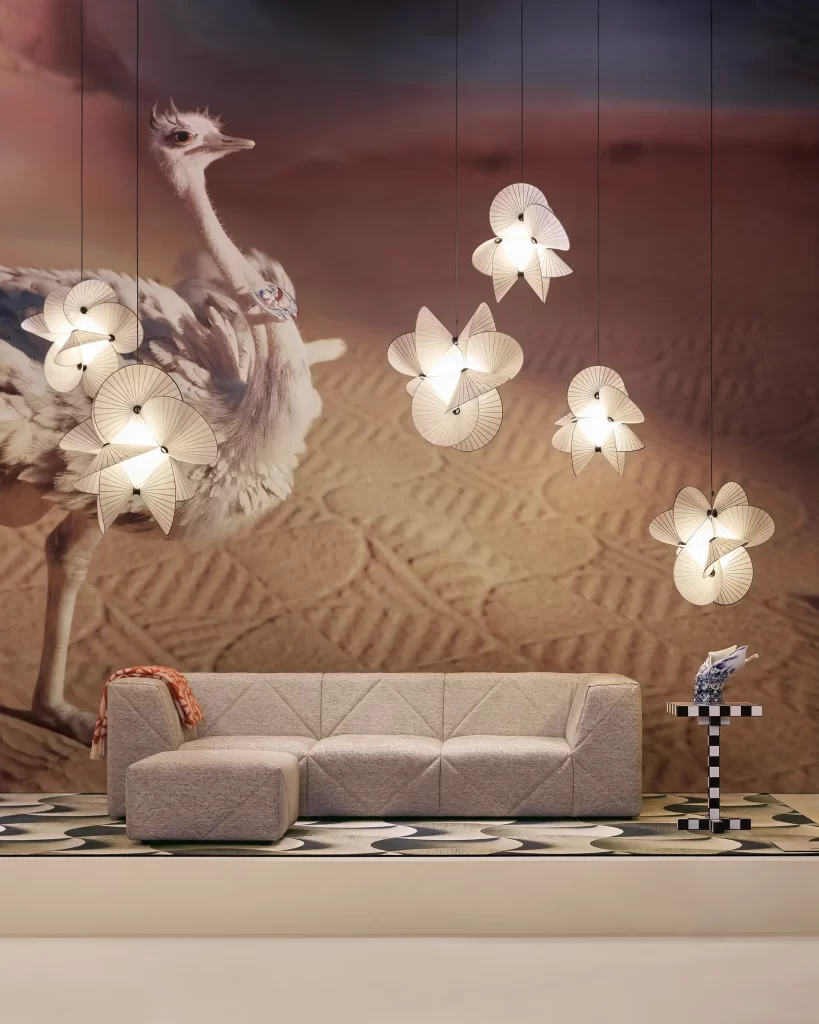
In addition to numerous re-editions of historical classics and design icons, the range of individually configurable, modular pieces of furniture is growing. In the bedroom, spacious XXL beds are expanding into veritable cocooning landscapes - often complemented by matching, functional accompanying furniture.
Intelligent materials are almost omnipresent: surfaces that integrate charging stations, smart textiles that react to temperature and modular systems that can be controlled by apps. They show how technology is becoming an integral part of material and design development beyond its functional purpose in order to seamlessly integrate itself into the interior as an atmospheric, adaptive experience - also in terms of lighting.
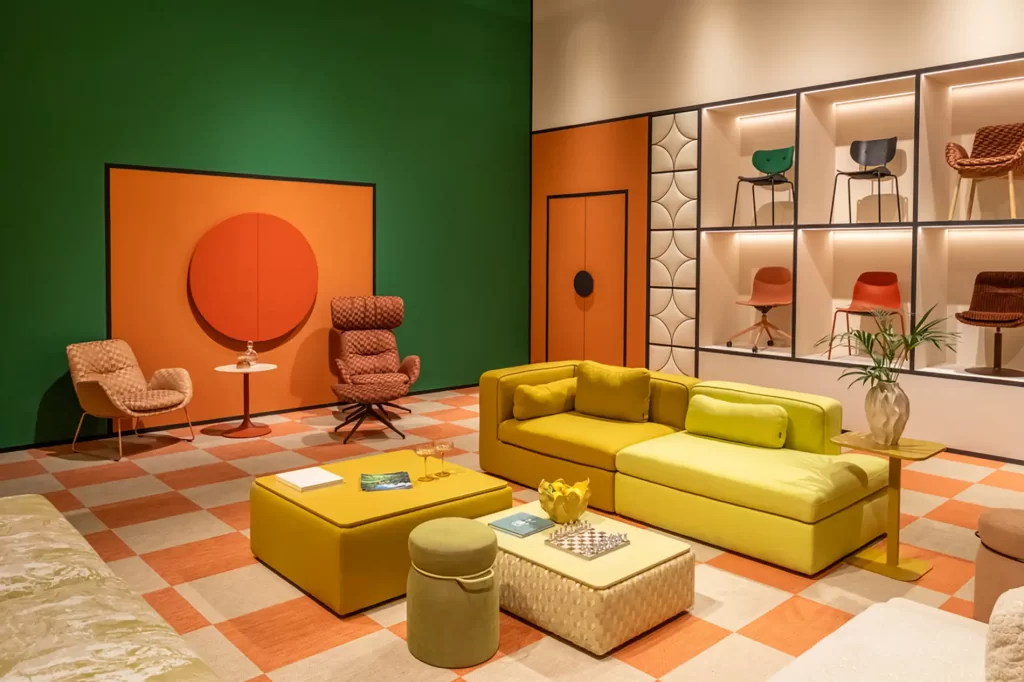
Materiality: the raw material as a message
The buzzword "material revolution" was omnipresent. Cork, hemp, mycelium, recycled plastics and locally sourced wood dominate the material lists of both major manufacturers and young design studios. Cellulose fiber composites, so-called "wood metal", are used in a variety of ways and concrete is also becoming a design tool.
The pursuit of perfection in material aesthetics is giving way to the unfinished and process-like. Rough, visibly recycled or even deliberately imperfect surfaces reflect the new centrality of history, authenticity and material biography.
However, there is one caveat: marketing strategies still dominate over genuine material innovations for many exhibitors. While sustainability and ethical design are held up as values by many brands, it often remains unclear how deeply these principles are actually integrated into everyday corporate life. The use of natural materials such as cork and recycled plastics is a step in the right direction, but their implementation and life cycle must be critically scrutinized.
It is good to know that Italy's largest Materiothek opened in Milan in April. Covering 500 m² with over 1,200 samples, 5,000 exhibits and 15,000 products in the catalog, Materia 2.0 aims to establish itself as a place for research, inspiration and innovative material experiences.
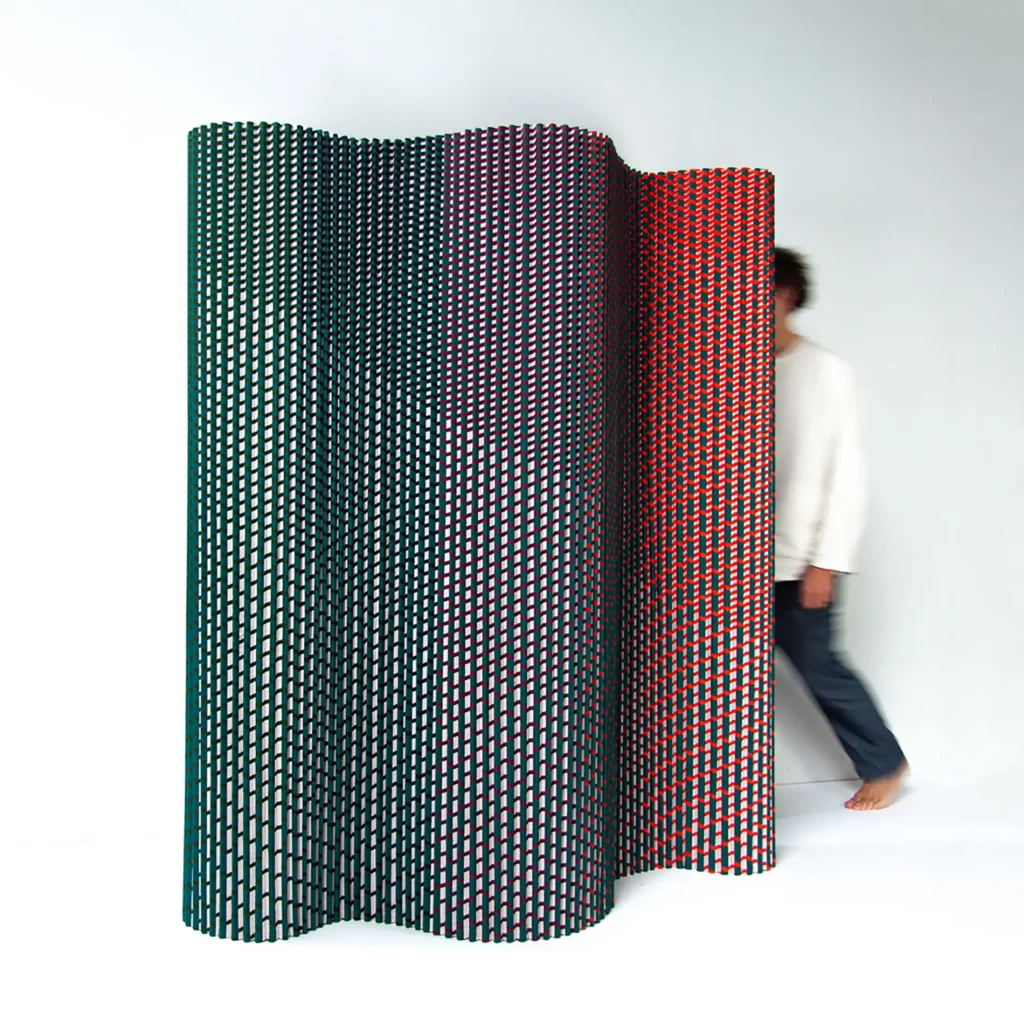
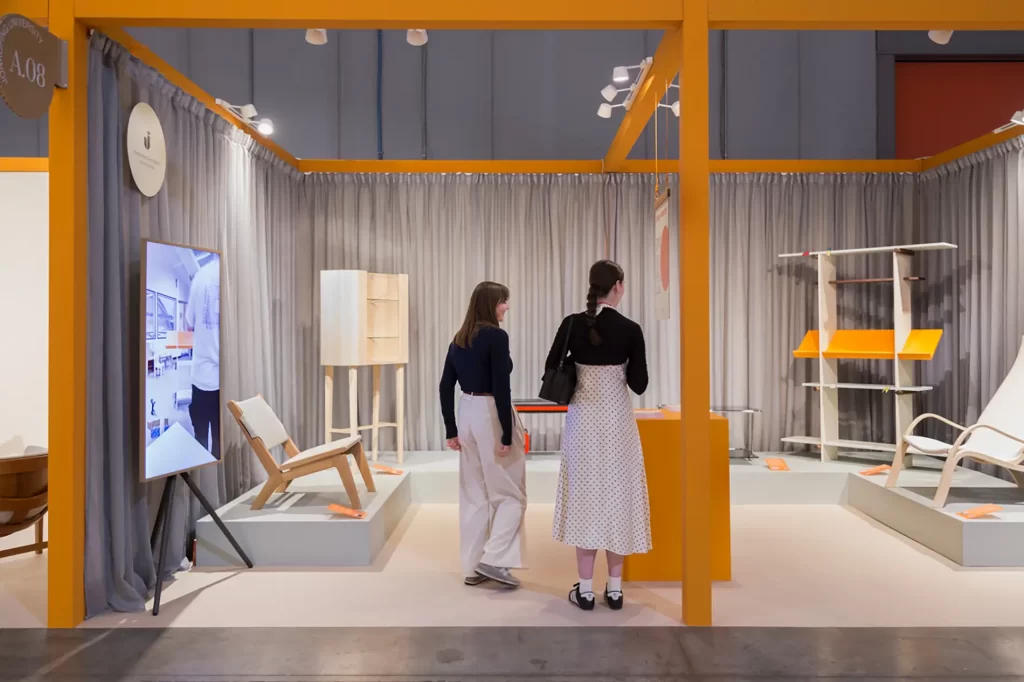
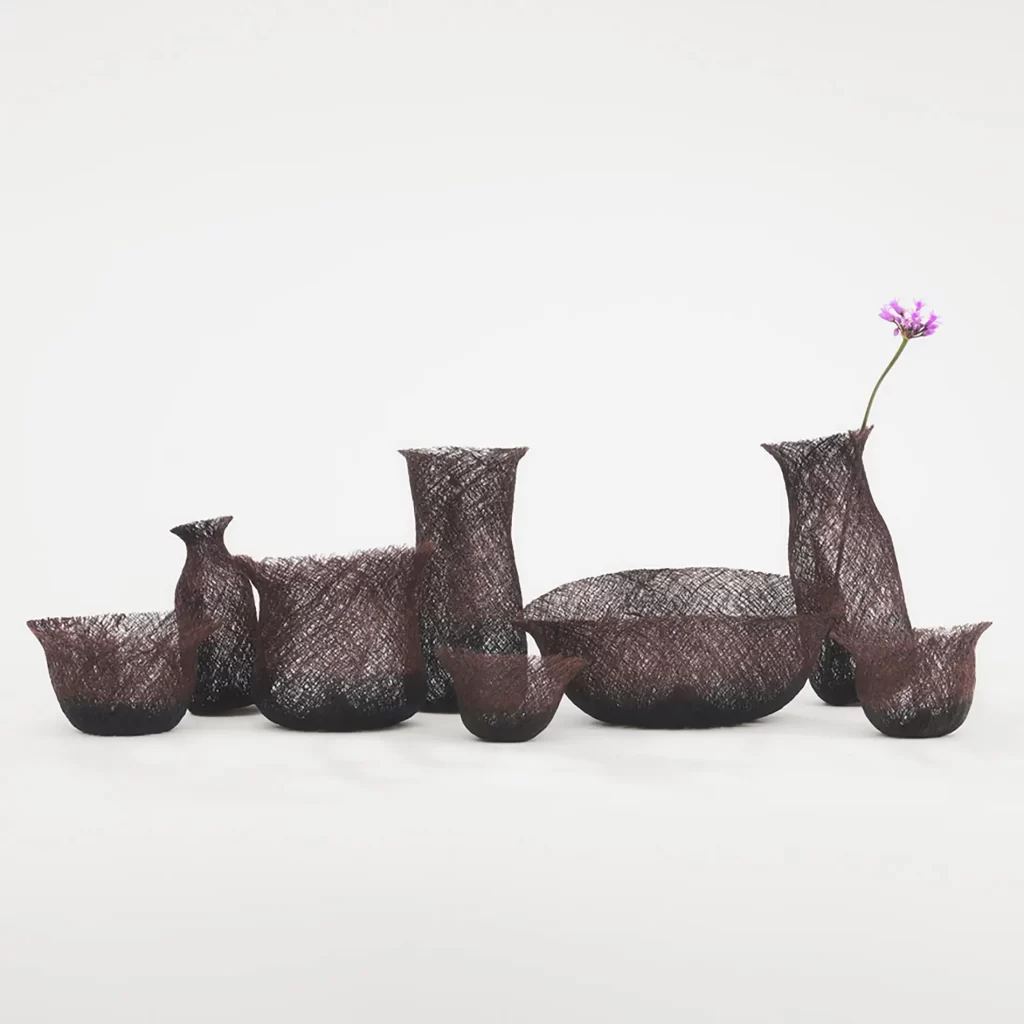
Before the maelstrom of Design Week's Mare Magnum in the city center, let's take a look at the SaloneSatellite: Under the curatorial direction of Paola Antonelli - Senior Curator in the Department of Architecture and Design and Director of Research and Development at New York's MoMA - U-35 designers presented their prototypes here under this year's motto "New Craftsmanship: A New World". First prize went to Kazuki Nagasawa from the Japanese studio Super Rat for his containers made from bark using traditional dyeing techniques. Second place went to the Dutch studio Luis Marie with "Plissade", a screen made of pure textile that does not require any binders or adhesives - it is held in shape solely by the art of pleating.

Fuorisalone
Interactive architectures and aesthetic escapades
Es Devlin's "Library of Light" revolves in the cour d'honneur of the Pinacoteca di Brera: the sculpture of illuminated bookshelves is reminiscent of a sundial. It symbolizes the library as a place of knowledge, a poetic space for reading and collective reflection, which - according to the British artist - is intended to encourage people to rediscover the value of time.
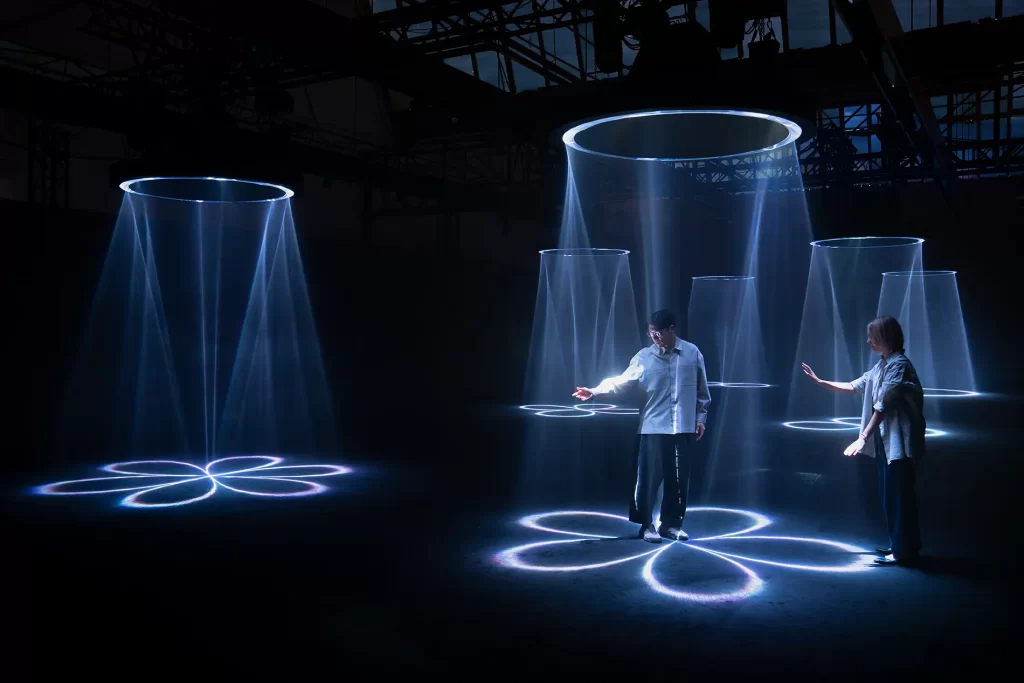
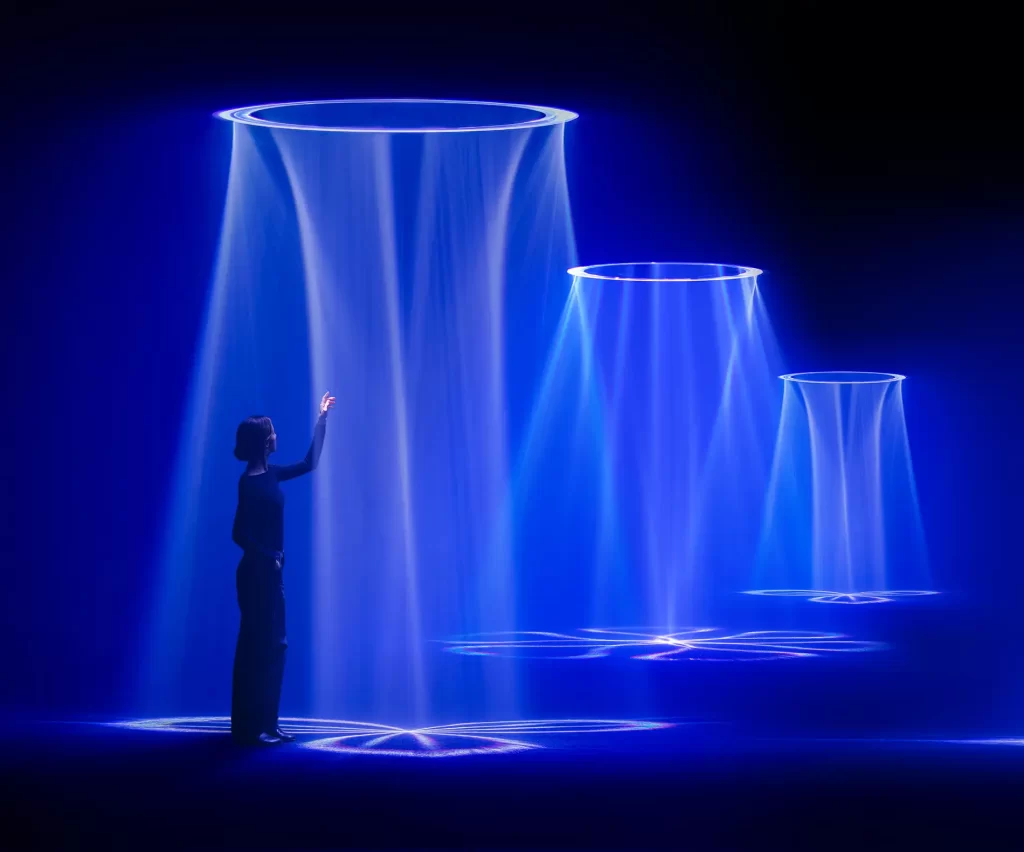
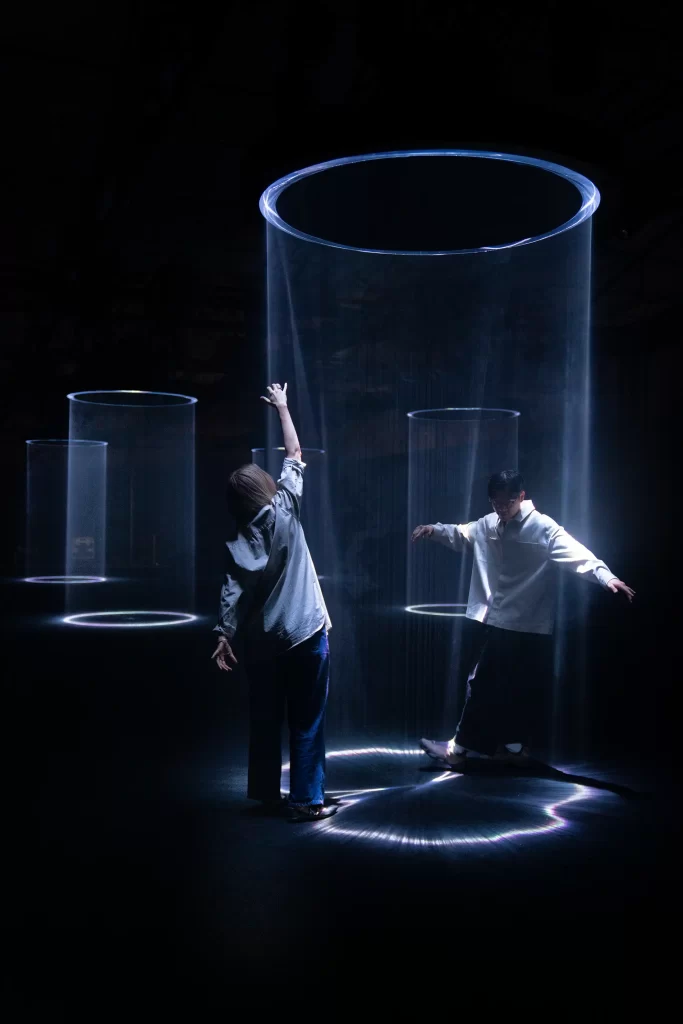
But time, yes, that is the problem. Hardly any of the design pilgrims sat down to read - but rather for an exhausted pit stop in the dizzying carousel of this Milan April week with around 1,050 contributions, where collective reclining landscapes - such as the colorful lounging at Marimekko in the Teatro Litta - and escapist concepts are gladly accepted. The zeitgeist seeks tranquillity. Queues formed in front of immersive installations such as "Making the Invisible Visible" by Lachlan Turczan for Google - literally keeping one's feet on the ground for the time being - seduced by the art fog of global marketing machines.
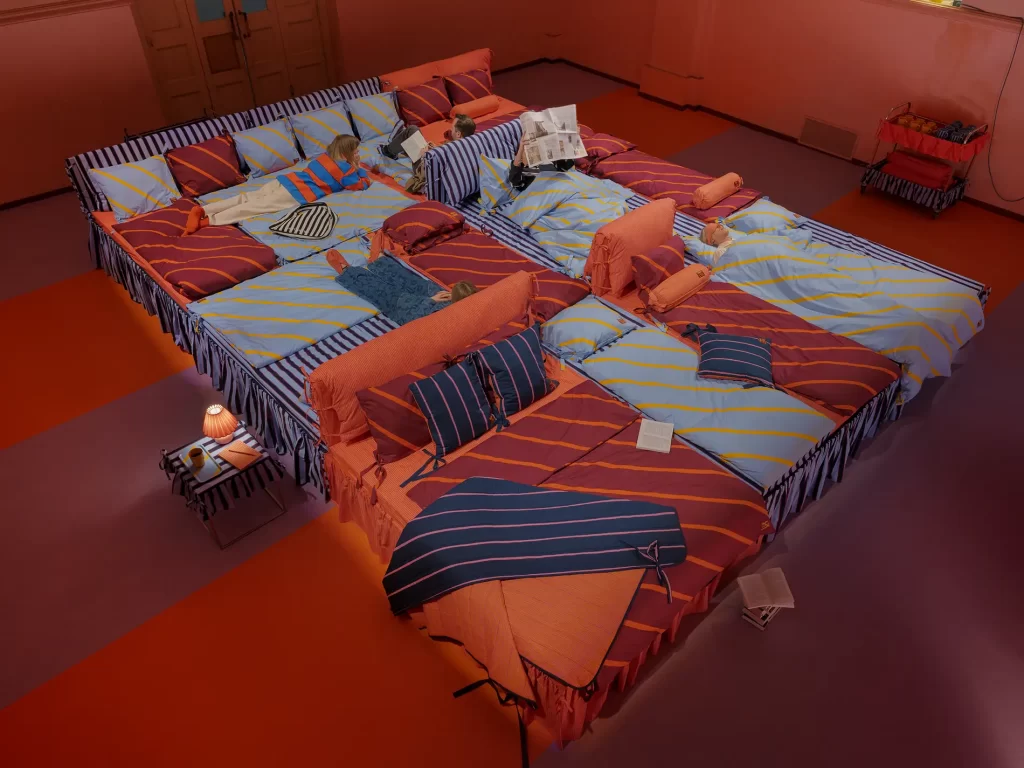
Art and literature as a brand message
The "Hyper Portal" by artist Michela Picchi shines brightly at Palazzo Moscova. The media-effective pop art cladding is part of an art promotion project by Glo. The tobacco heater manufacturer, together with car manufacturer Denza the main sponsors of the Fuorisalone, is not alone: Grand Seiko also has its finger on the pulse of the times with the glowing, melting ice sculptures ("Frozen") by Japanese designer Tokujin Yoshioka.
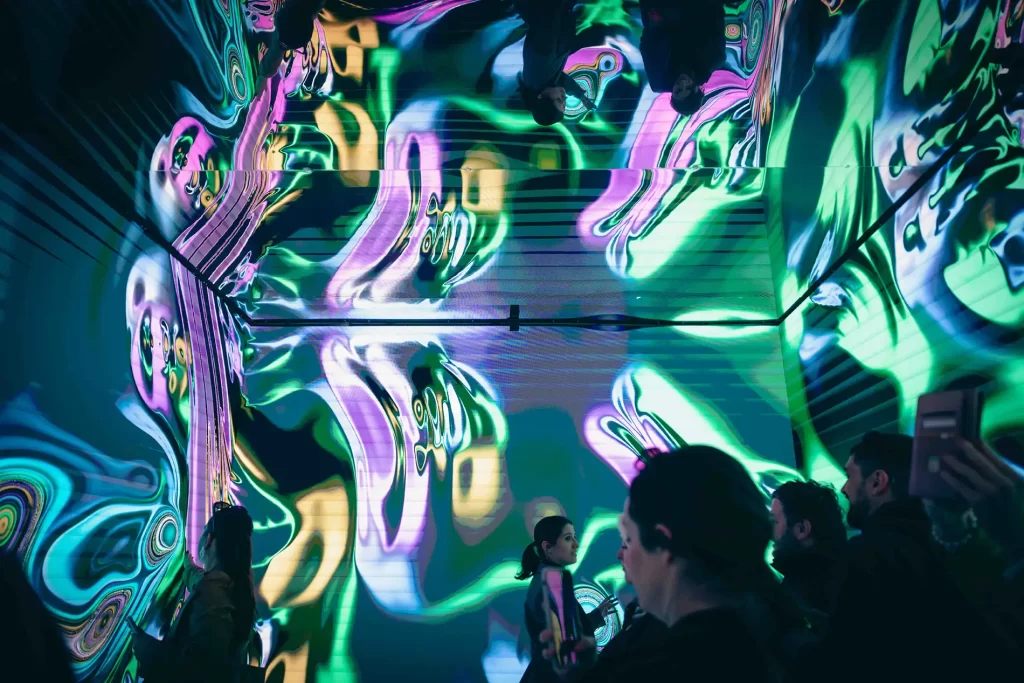
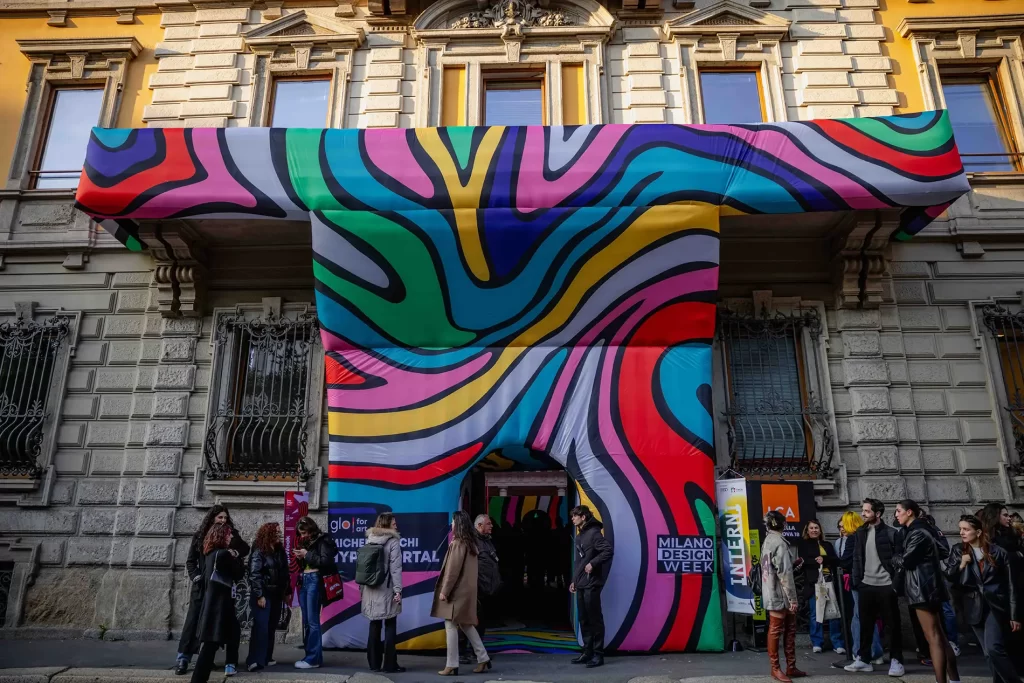
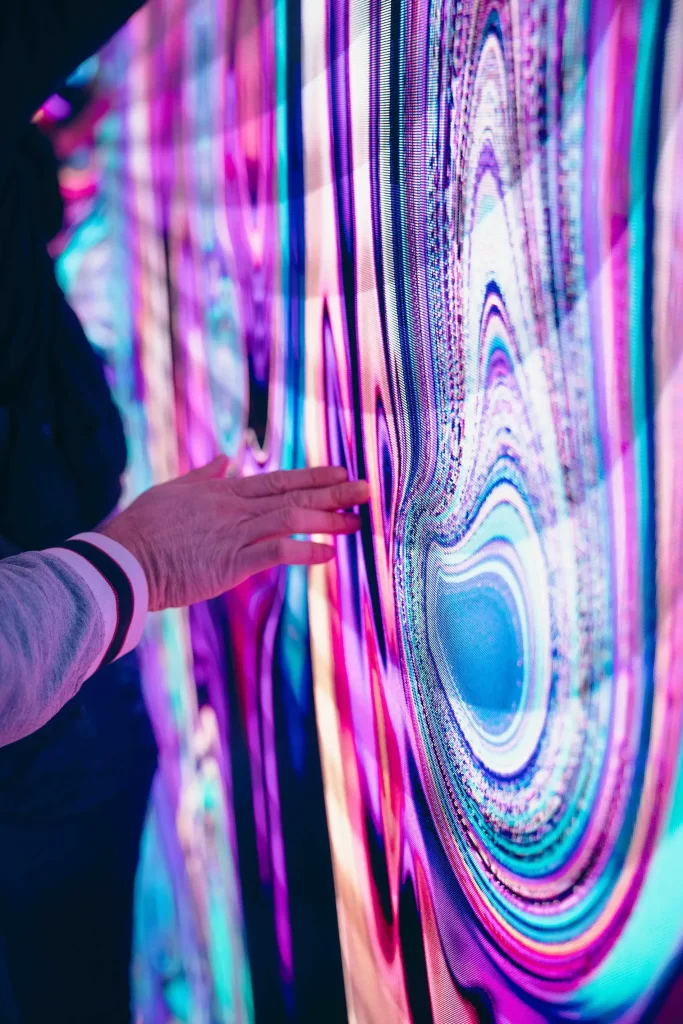
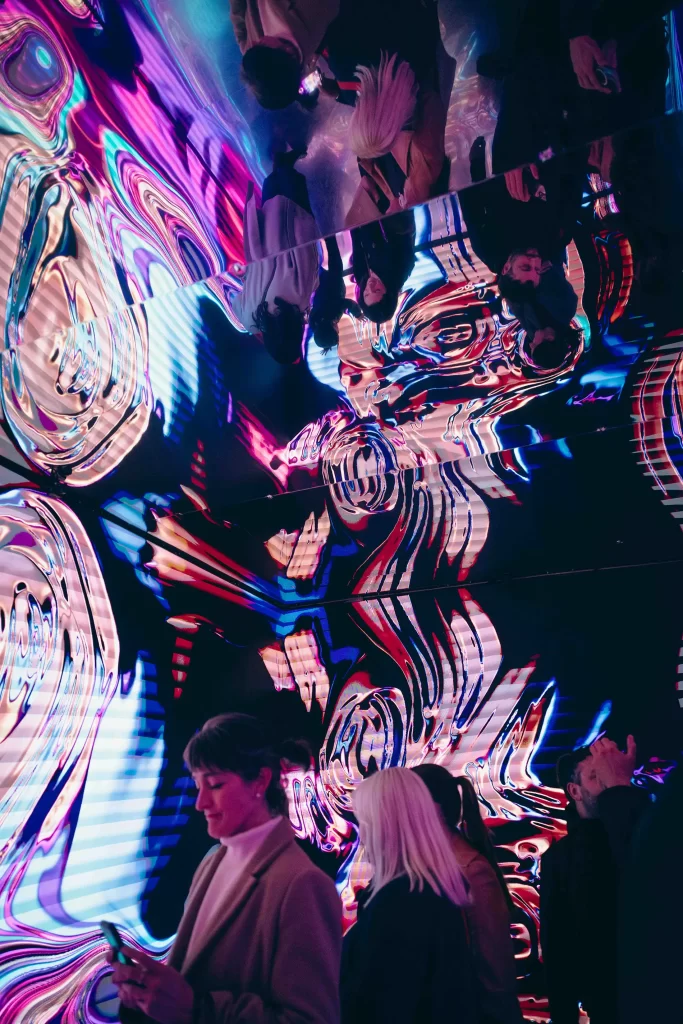
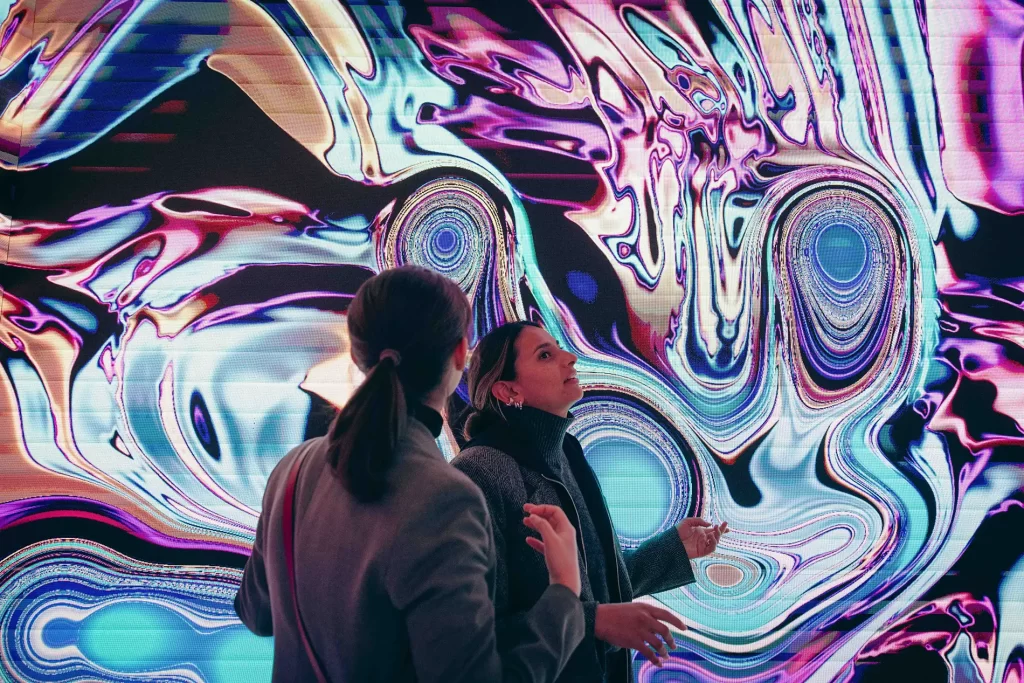
Lavazza lets Portuguese sculptor Joana Vasconcelos speak for herself: In the colonnade-lined courtyard of the Palazzo del Senato, an 18-metre-long installation is completely covered in coffee powder, with tropical plants and water features inside.
Afterwards, you'll be awake enough for Miu Miu's "Literary Club" at the Circolo Filologico Milanese, where education, equality, Simone de Beauvoir and Fumiko Enchi are discussed. Or you can hop around transformed into a Chiquita banana by AI. In the thicket of Fuorisalone events under the motto "Connected Worlds", there is everything between sacred and profane, except one thing: business as usual. And that's a good thing.
Creative contamination
The exhibition "Weaving Anni Albers" on the sixteenth floor of the Torre Velasca is outstanding in the truest sense of the word. In collaboration with the Josef & Anni Albers Foundation, Dedar has reinterpreted textile designs and works by the artist, which were created between 1936 and 1974, using contemporary means and sensitively translating them into the present.
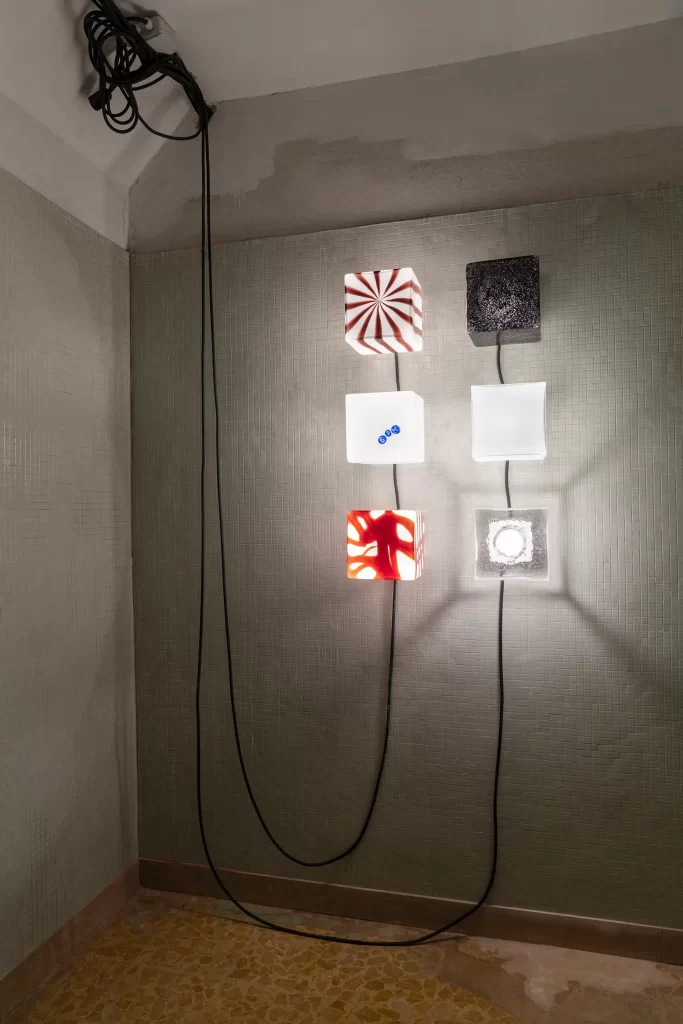

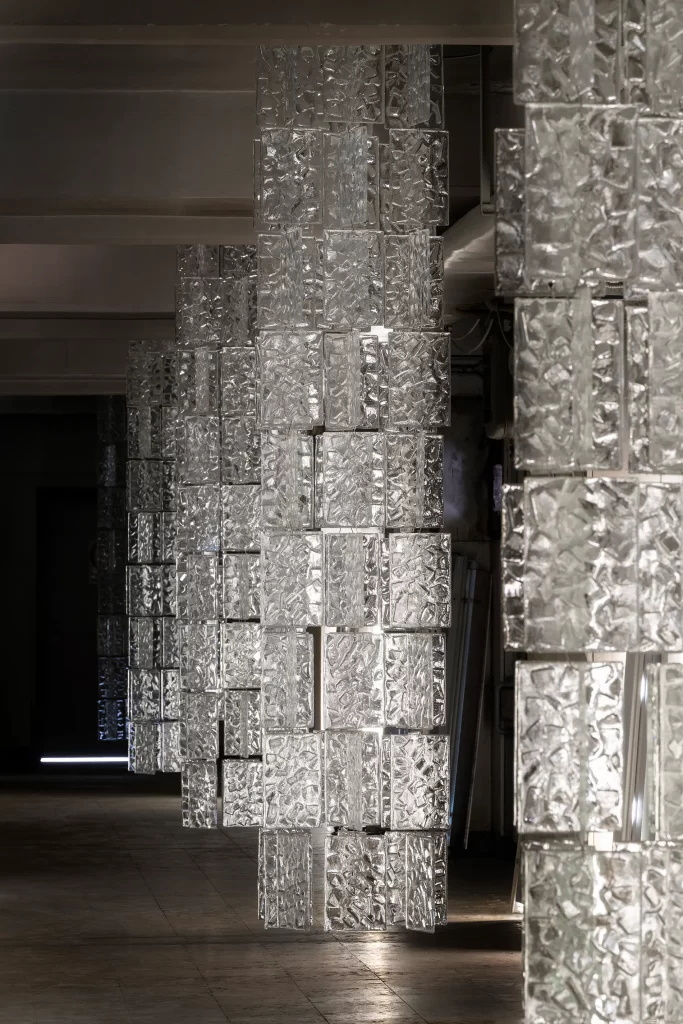
But it is not only at lofty heights that aesthetic potential is hidden underground: between old showers and travertine-panelled changing rooms with pastel-coloured mosaics, lamps and accessories made of hand-blown glass shimmer in the former Piscina Cozzi public baths from 1934 under the title "Two-Fold Silence" - presented by 6:AM Glassworks.
The Design Addicts in the former Pelota sports hall are immersed in a labyrinthine play of floating structures and colorful light reflections. Charlotte Macaux Perelman, artistic director of Hermès, has staged the house's home collection here like treasures in a secret jewelry box.
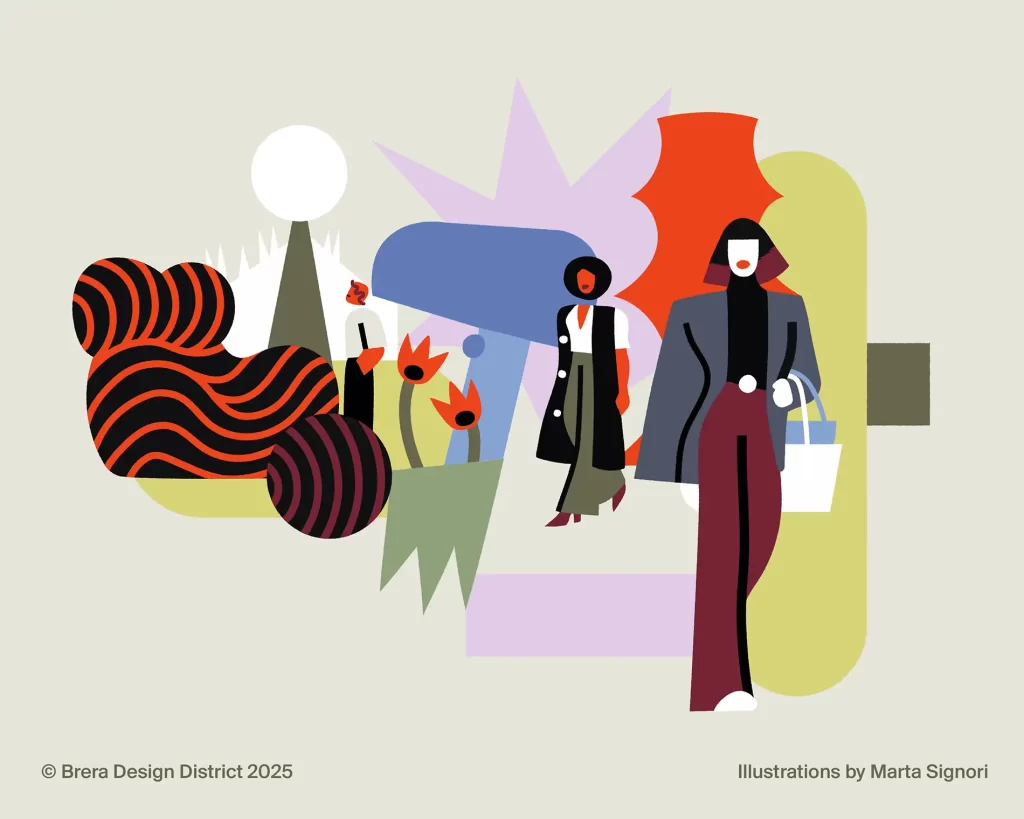
Brand rituals
In the Brera Design District, fashion and lifestyle labels like to celebrate their exclusivity in sacred buildings that suggest devotion: in the 16th century Chiostri di San Simpliciano, Gucci pays tribute to the material bamboo with the "Bamboo Encounters" exhibition - both in the history of design and in the history of the house, which began with the legendary Gucci Bamboo Bag from 1947.
A 16-metre-long table made of Lebanese cedar by Sebastian Cox (UK) stands in the cloister courtyard of the Chiesa del Carmine. It was set by the Australian body care label Aēsop, which also invites guests into the sacristy to reawaken their senses with the multi-sensory installation "The Second Skin".
A varied "Teapot" walk awaits you at Palazzo Citterio: the teapots designed by 25 creative minds for Loewe range from surreal to minimalist.
The signpost leads to "The Last Pot" in the Biblioteca Ostinata. Here, Alessi presents an eclectic collection of funeral urns - a series interpreted both aesthetically and symbolically, designed by international design greats including Giulio Iacchetti, Philippe Starck, David Chipperfield, Naoto Fukasawa and Daniel Libeskind.
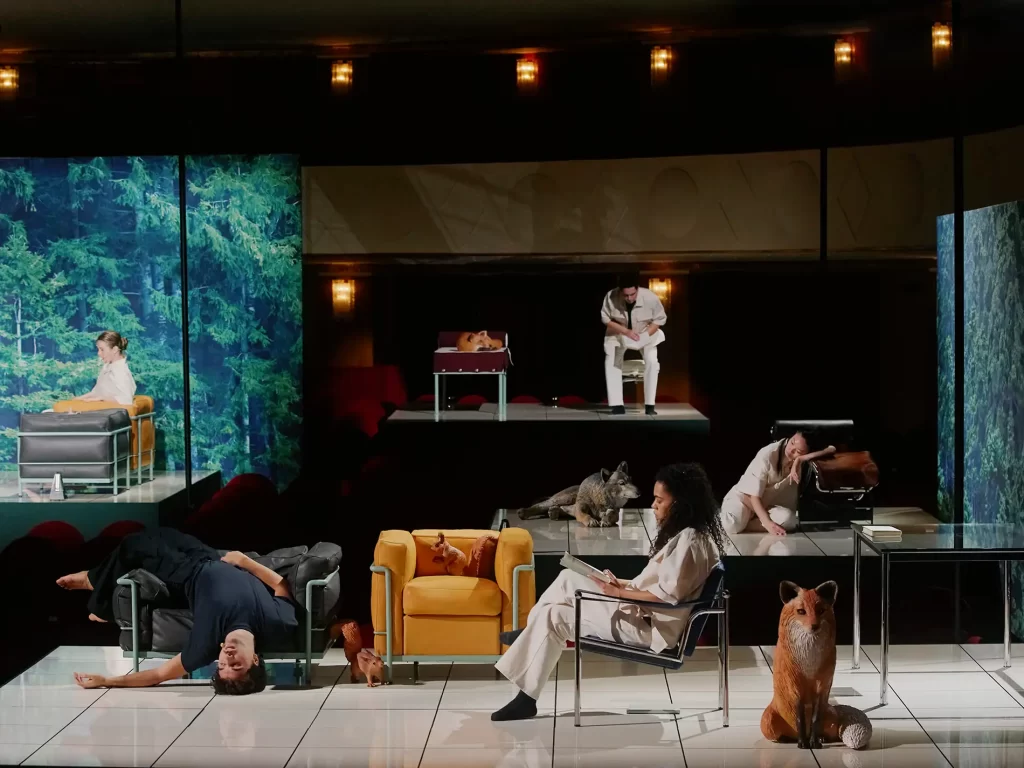

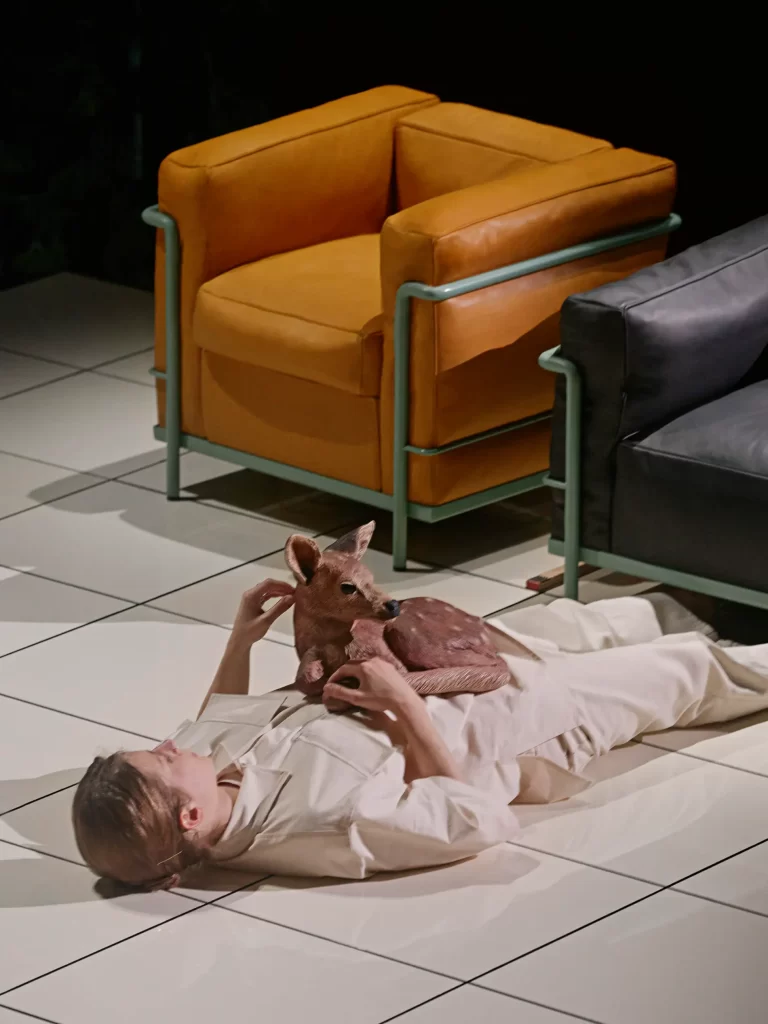
Design Theater
Cassina celebrated the 60th anniversary of its collections inspired by Le Corbusier, Jeanneret and Perriand with "Staging Modernity" in an unusual staging at the Teatro Lirico Giorgio Gaber. Formafantasma and Fabio Cherstich suggested a modernist vision that rethinks nature and design and deliberately blurs the boundaries between man, animal, wilderness and modernity - an approach that was reflected in some design positions in Milan in Nature Reframed and post-anthropocentric concepts.
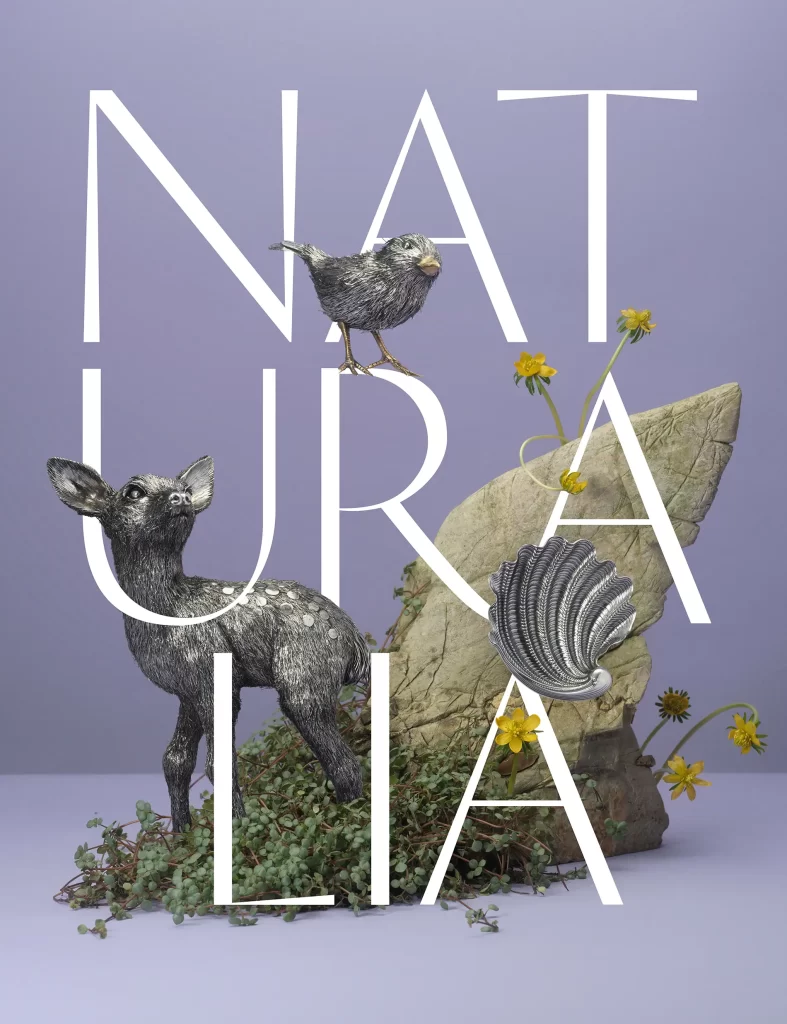
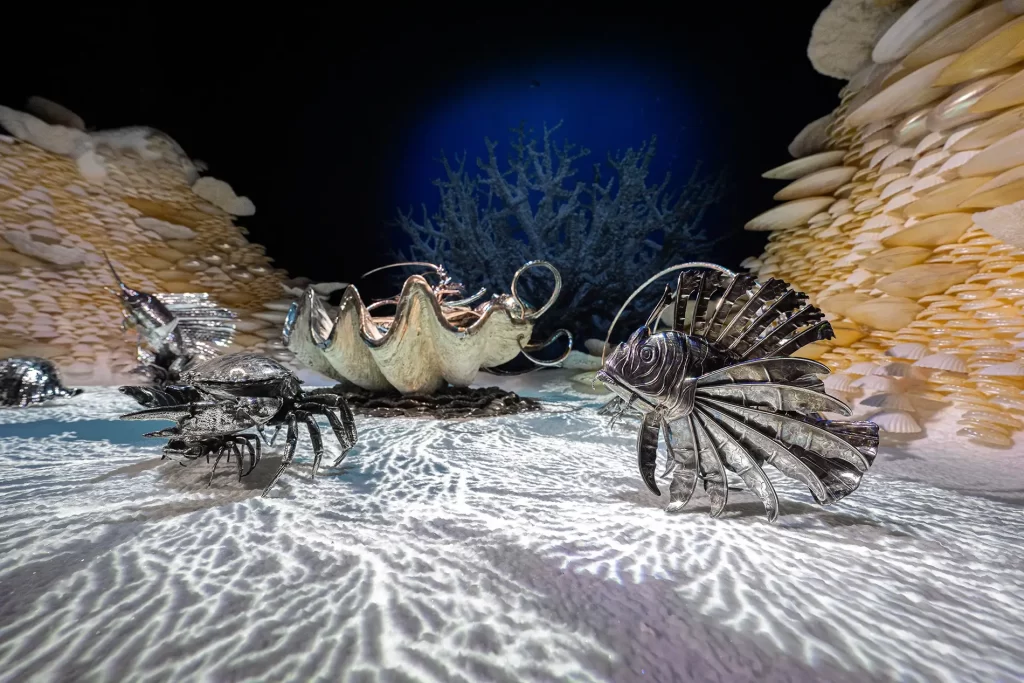
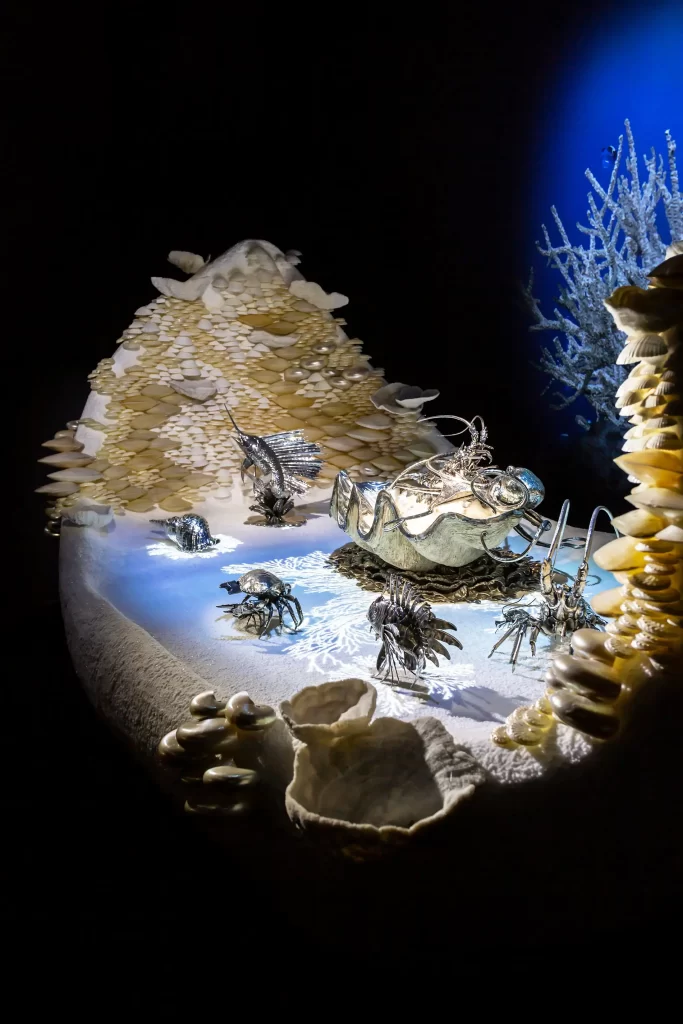
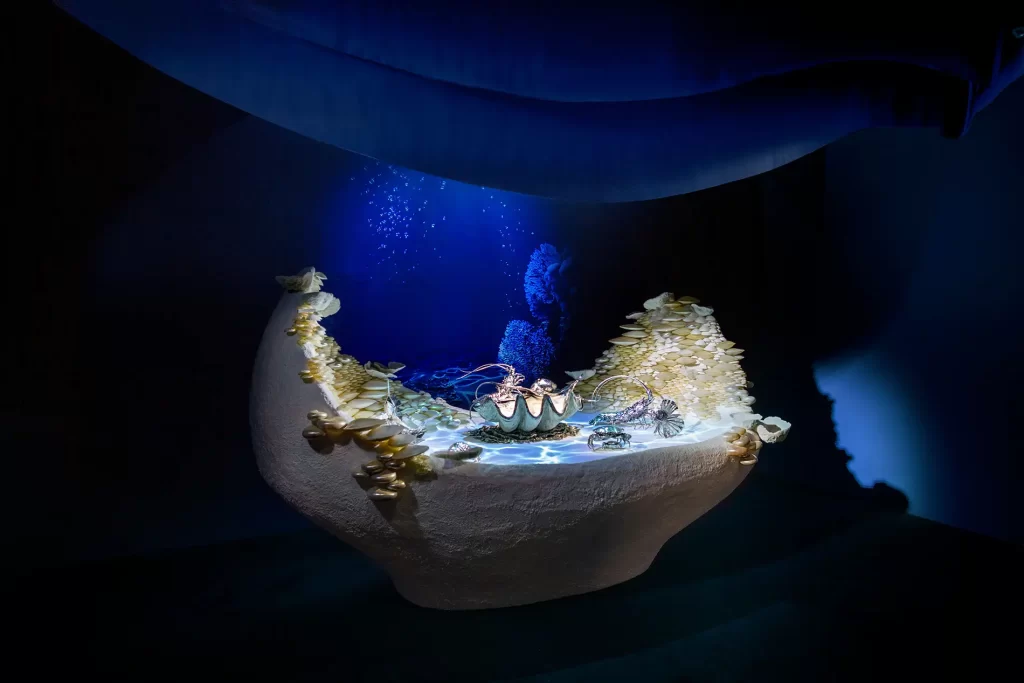
Designers as protagonists
The designers themselves became the leading actors in "The Theatre of Things - 7 Nights and 7 Days: Living with Collectible Design". During Design Week, the group of artists, including Objects of Common Interest, Linde Freye Tangelder and Espace Aygo, moved into the Delvis (Un)Limited gallery, which had been transformed into a collector's apartment for the occasion - with a window view of the lively Via Fatebenefratelli. Every morning, the designers were woken up by a journalist or curator over coffee - for an informal chat about the experience.
Alcova goes Varedo
In search of atmospheric settings, Alcova moved its field of experimentation to the municipality of Varedo near Monza this year, where it used four extraordinary locations: the historic Borsani and Bagatti Valsecchi villas, a disused SNIA chemical factory and the Pasino greenhouses - once one of the largest orchid farms in Europe - which have been reclaimed by nature. These provided a contrasting backdrop for the imaginative and material-conscious concepts of young designers. Studio Tooj, for example, presented a collection made of 3D-printed quartz sand. Atelier Luma showed furniture made from bioplastic and carpets made from palm fronds, created in cooperation with the Irthi Contemporary Crafts Council.
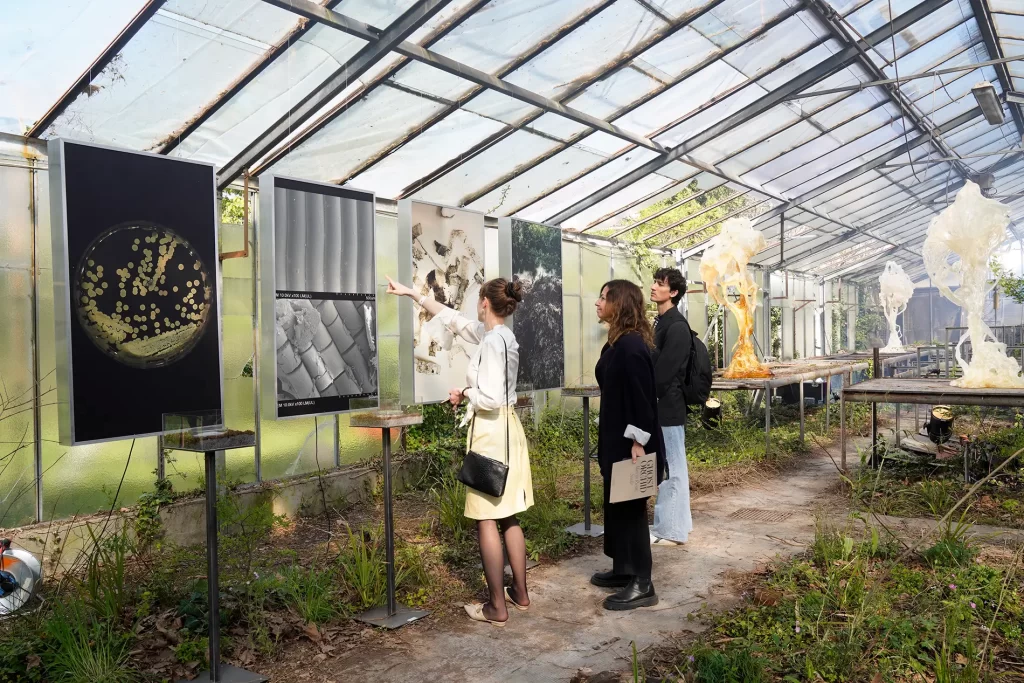


Dialogue in the Palazzo
In addition to the exhibitions at the Triennale, the ADI Design Museum, legendary galleries such as Nilufar and top-class curated showrooms, Milan Design Week always offers the rare opportunity to enter magnificent palazzi that are otherwise closed to the public - such as the Palazzo Donizetti, a fascinating 19th century residence. Artemest celebrated its tenth anniversary here, with six international design studios each interpreting a room in their own unique way.
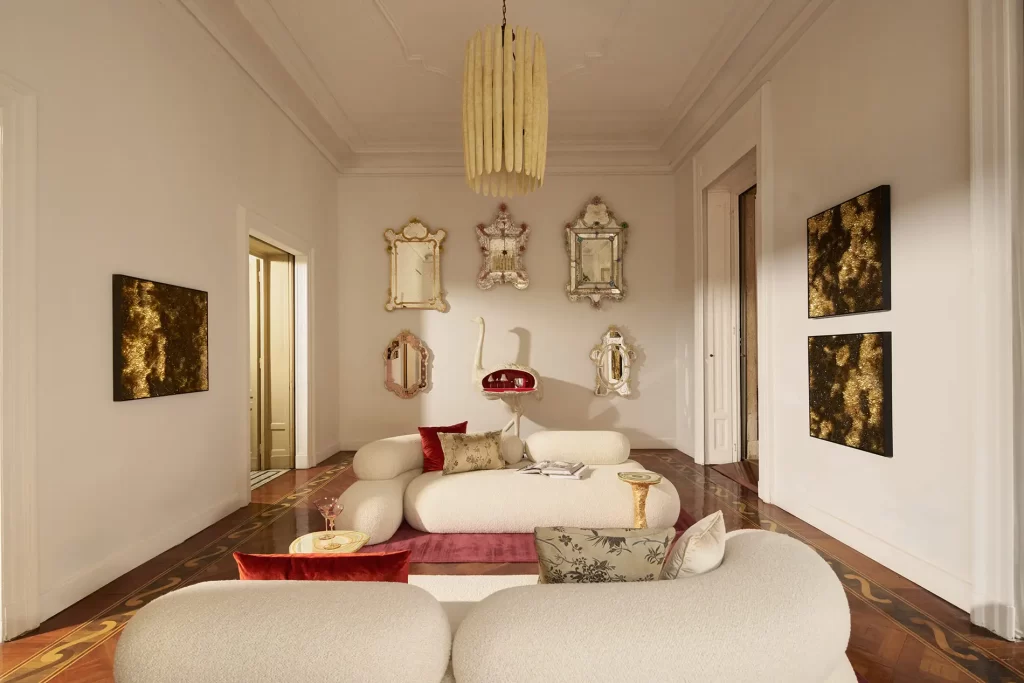
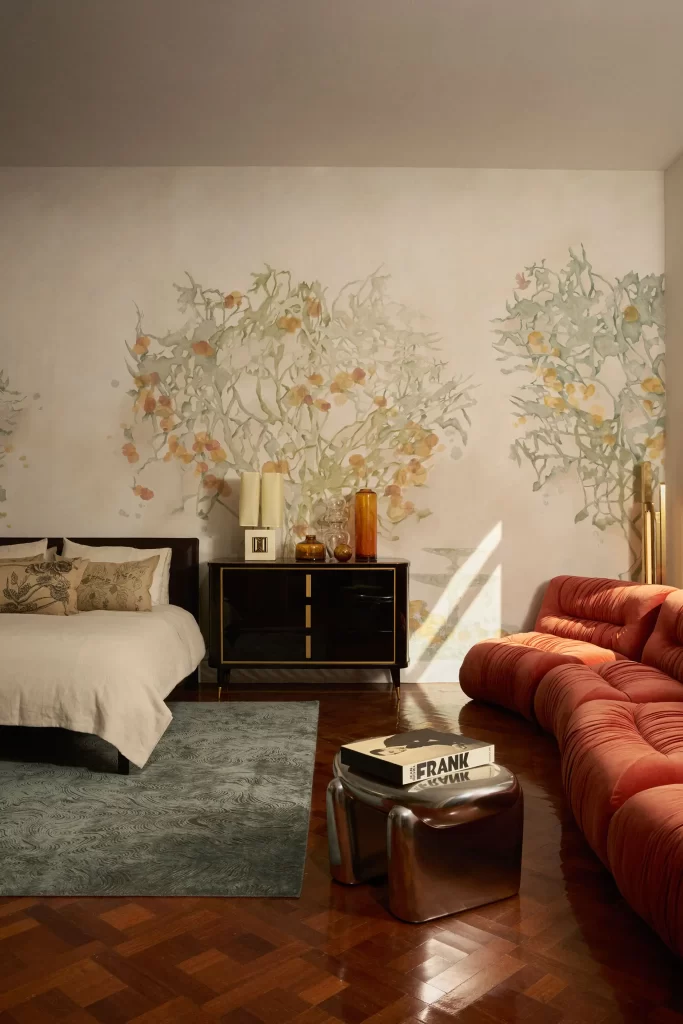
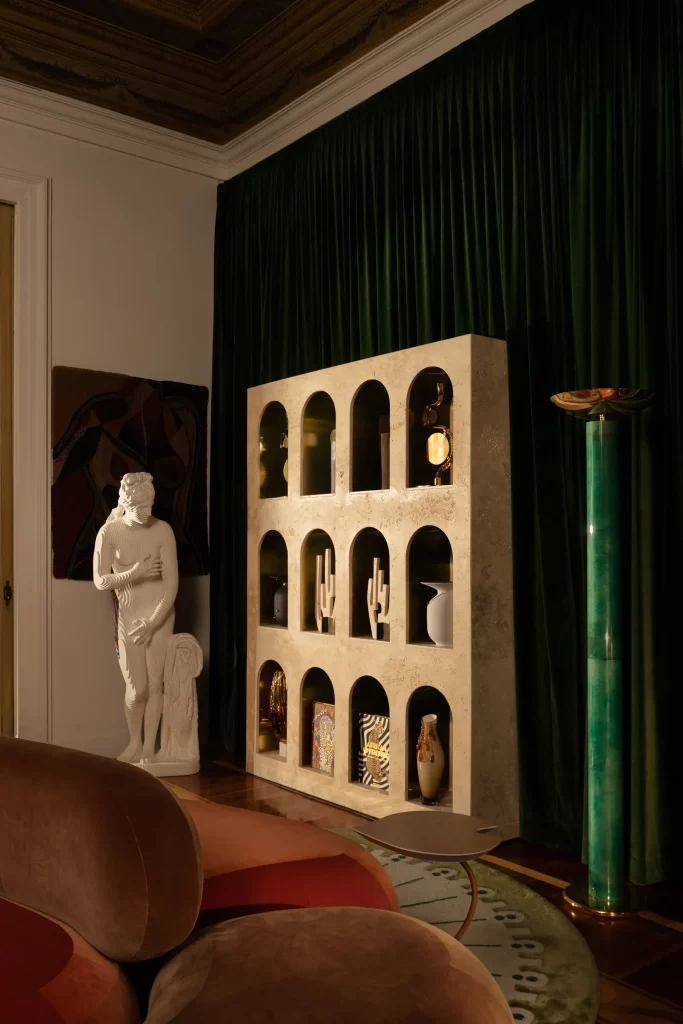

At Palazzo Serbelloni, Louis Vuitton will be showcasing its "Objets Nomades" collection: experimental, functional designer pieces in limited editions, which will be presented amidst an assemblage of carpets, plates and illustrations from the archive of futurist artist Fortunato Depero.
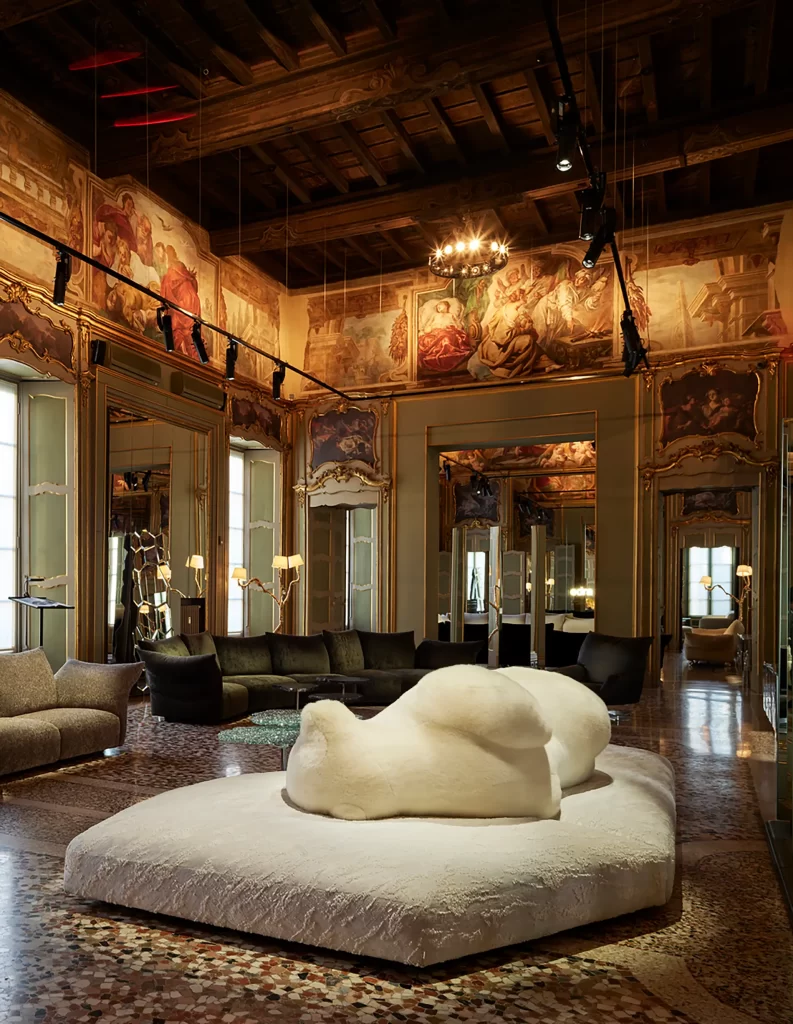
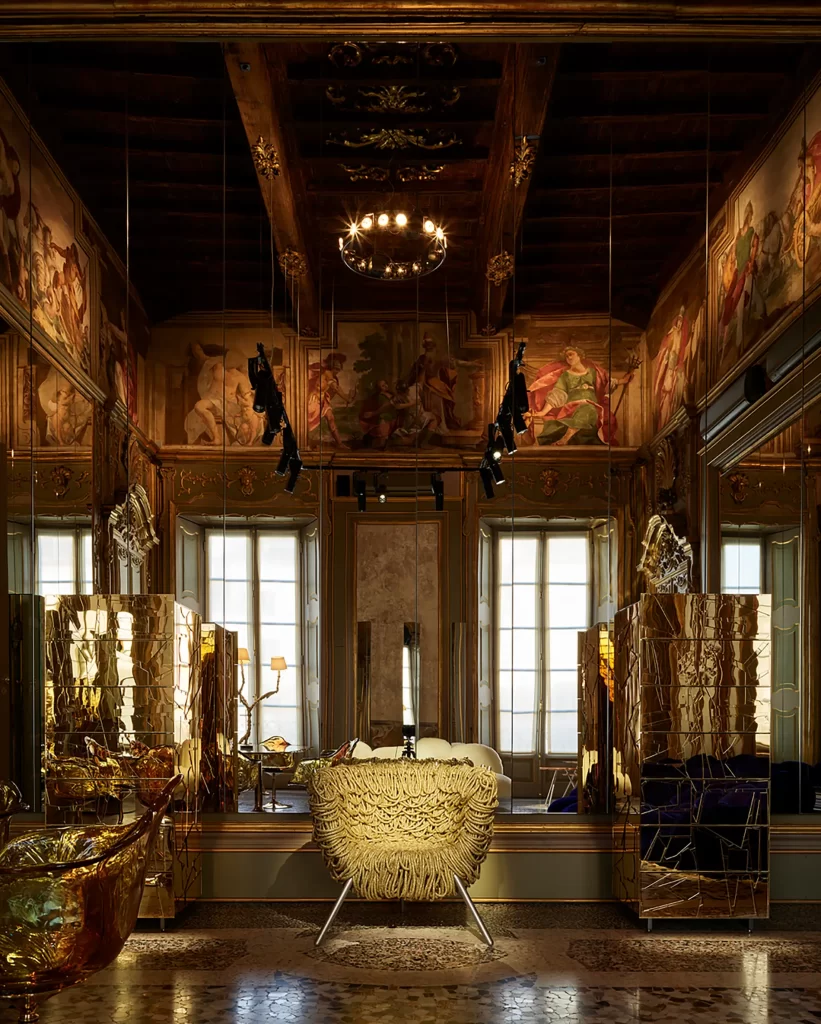
Creativity and cultural interpenetration meet very suggestively in the baroque rooms of Palazzo Litta, where designers and manufacturers from all over the world explore the theme of "migrations" in the "MoscaPartners Variations" exhibition.
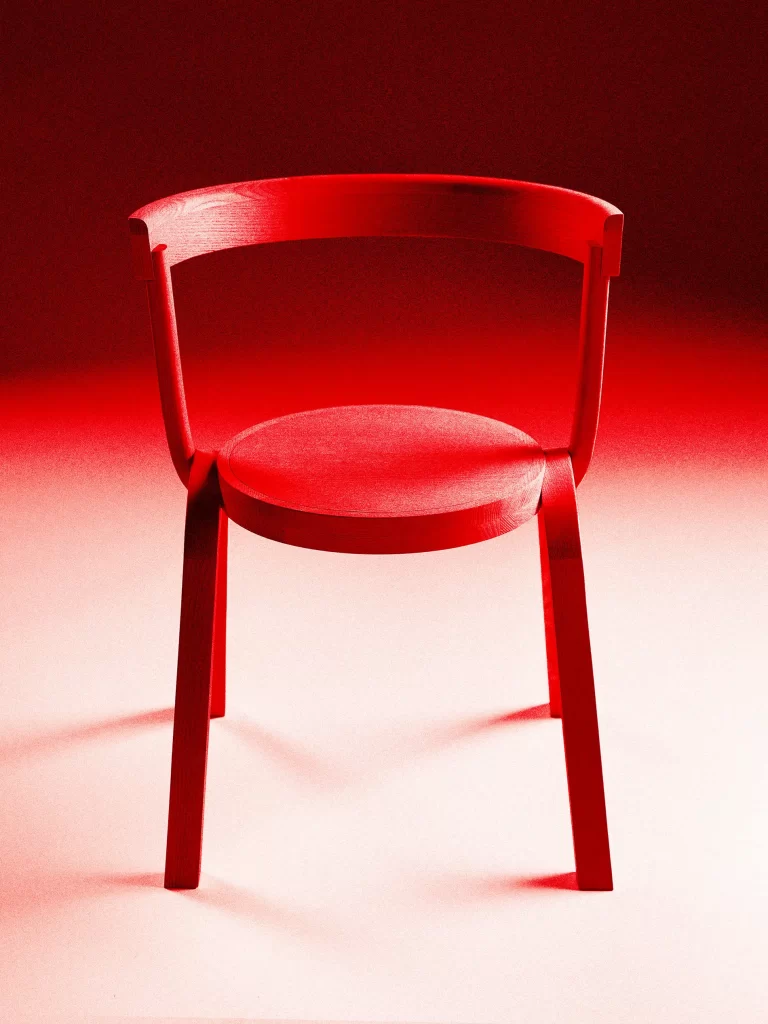
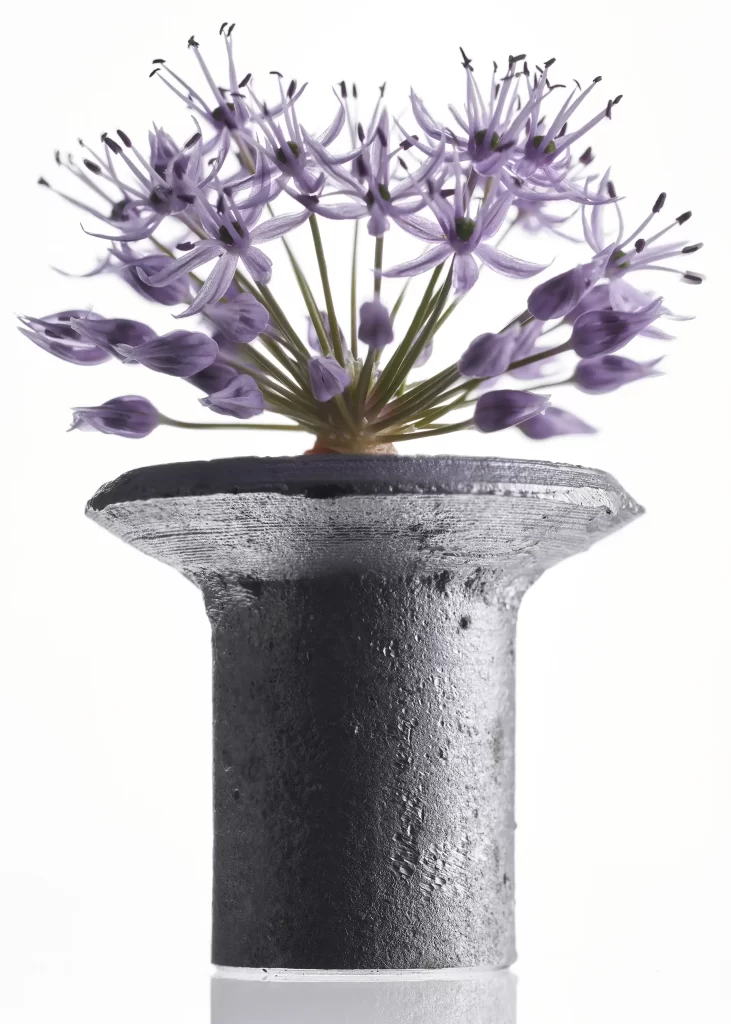
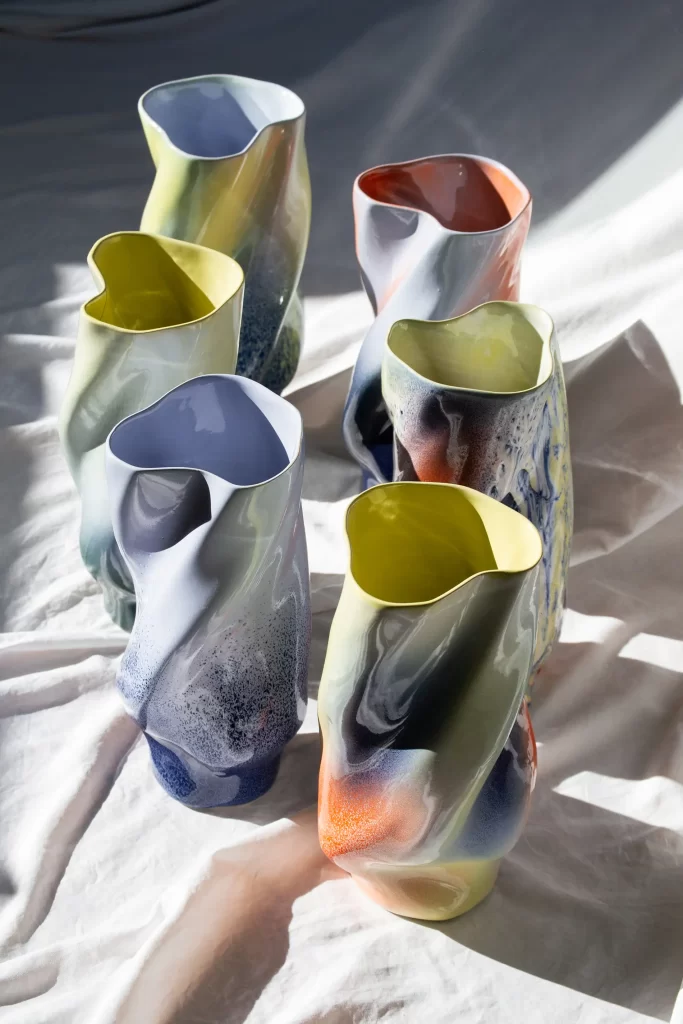
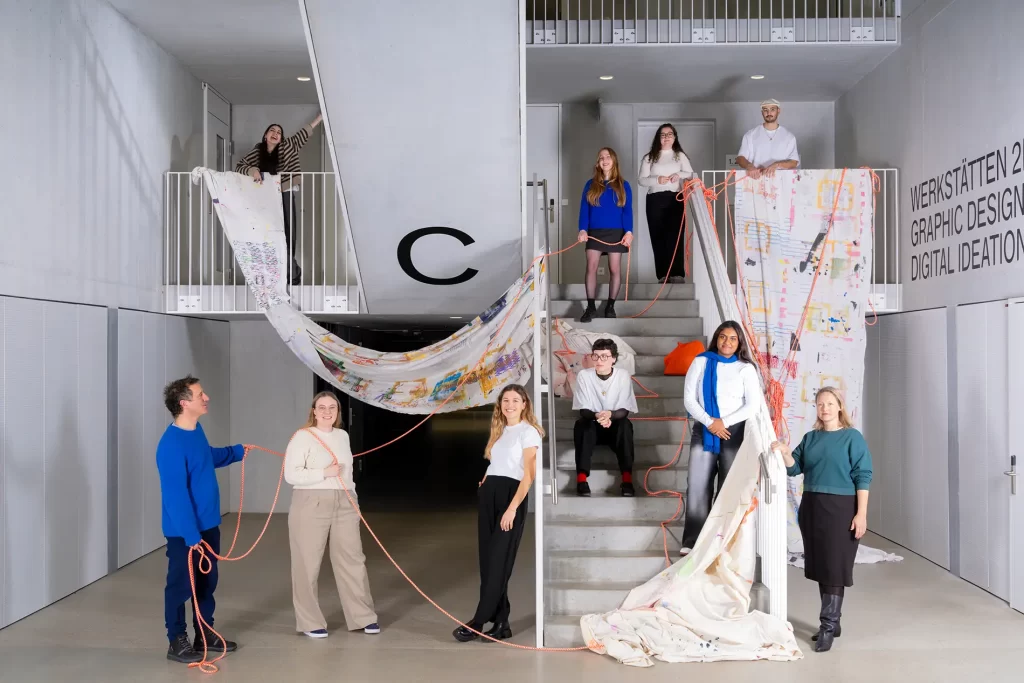
Vision and craftsmanship
In previous editions of Fuorisalone, the House of Switzerland at Casa degli Artisti has already established itself as a platform for contemporary Swiss design. This year's focus was on "collaboration" as a driving force for creative processes and social change. The exhibits included the "Ramel Series", everyday objects made from recycled aluminum, which Antonio Severi created in collaboration with the Exil Collective from Beirut, as well as the jointly developed chair series by the ECAL University in cooperation with the Japanese label Karimoku New Standard.
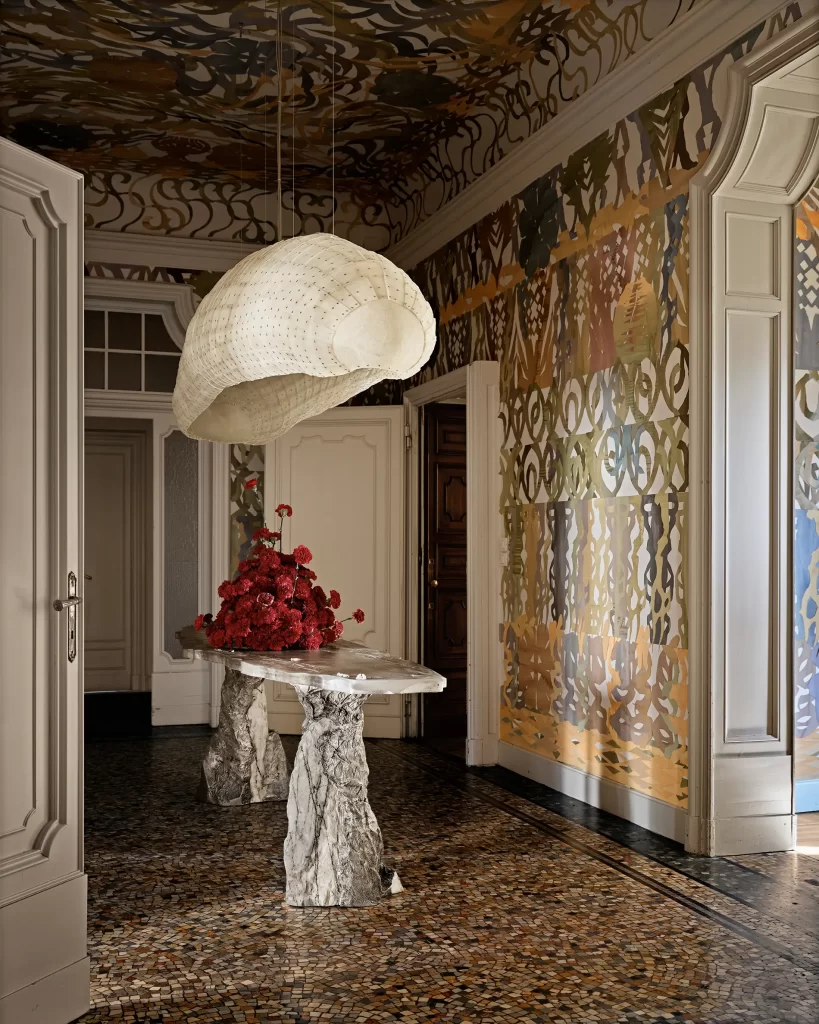
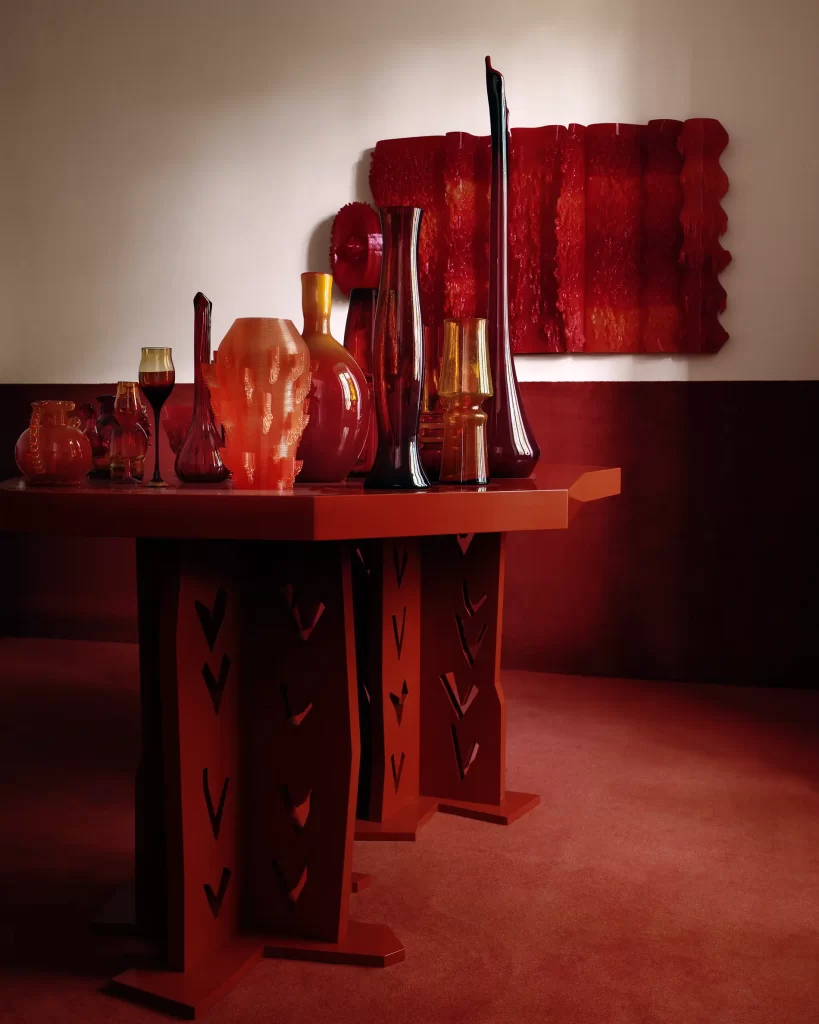
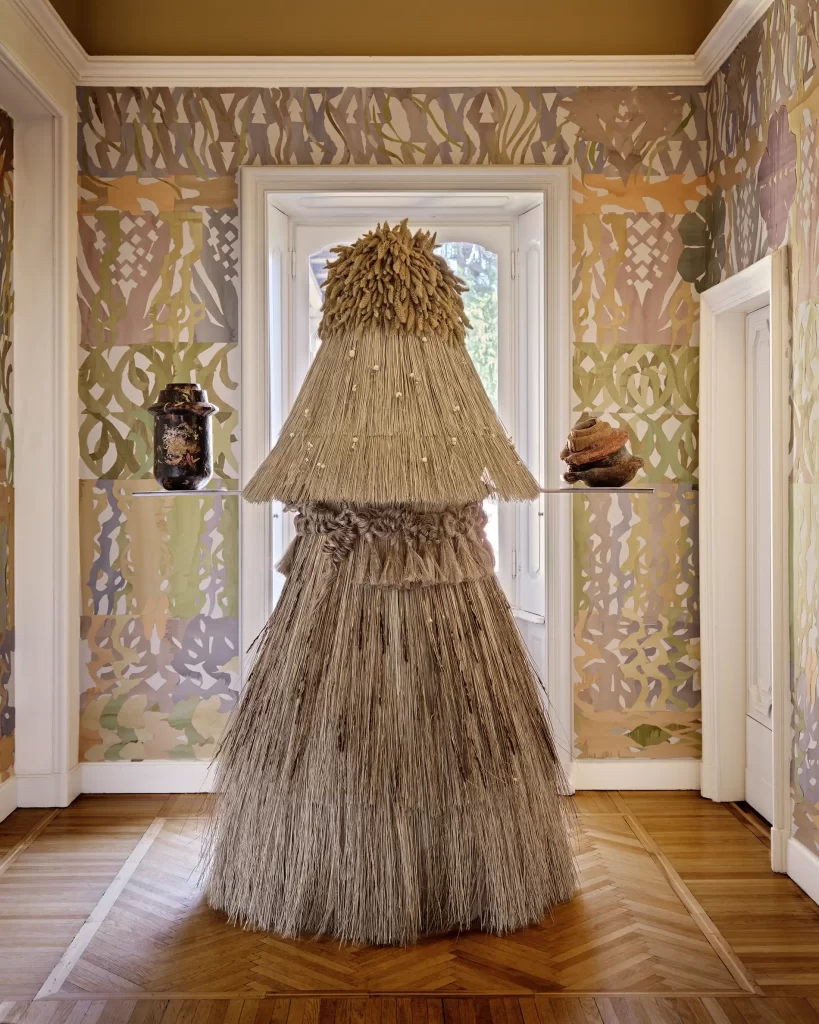
"Romantic Brutalism: A Journey into Polish Craft and Design" at the Visteria Foundation
The original design objects from "Doppia Firma - Double Signature" at Villa Mozart are always a feast for the eyes - a project that combines innovative European design with traditional, regionally rooted craftsmanship. The 2025 edition showcased Alpine handicrafts in an exciting dialog with the designs of international designers such as Antonio Aricò, Cara/Davide, Bethan Laura Wood and Draga & Aurel.
Contrasts
"Secret location by appointment only" - this can be read in the premiere invitation to the Capsule Collection Garçonnière by interior designer Giuseppe Porcelli. Not everyone was able to enjoy a voyeuristic glimpse into the bachelor's retreat - a spatial staging read as a subtle interpretation of homoerotic experience. Intellectual references - from Jacques-Émile Ruhlmann to Jacques Adnet, from Eileen Gray to Jean Royère - were waiting to be deciphered.
The Muji Muji mini-house by Parisian studio 5-5 in the Pippa Bacca garden was much more accessible. Claire Renard and Jean-Sébastien Blanc, both pioneers of upcycling, were inspired by Japanese architecture and responded to the increasing need for retreat in the urban hustle and bustle with their living concept.
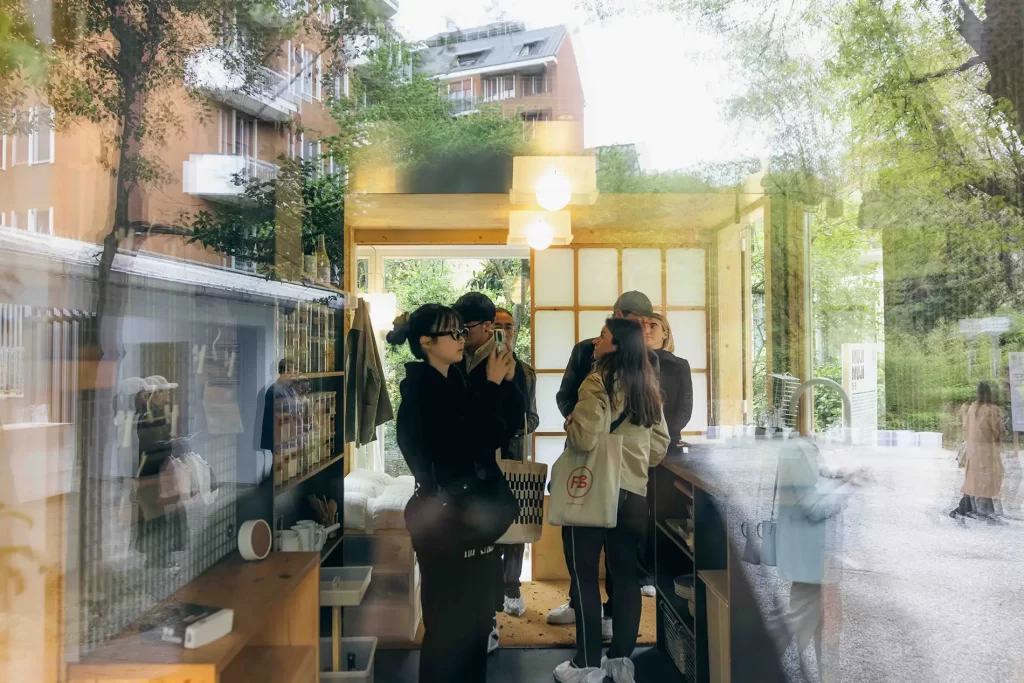
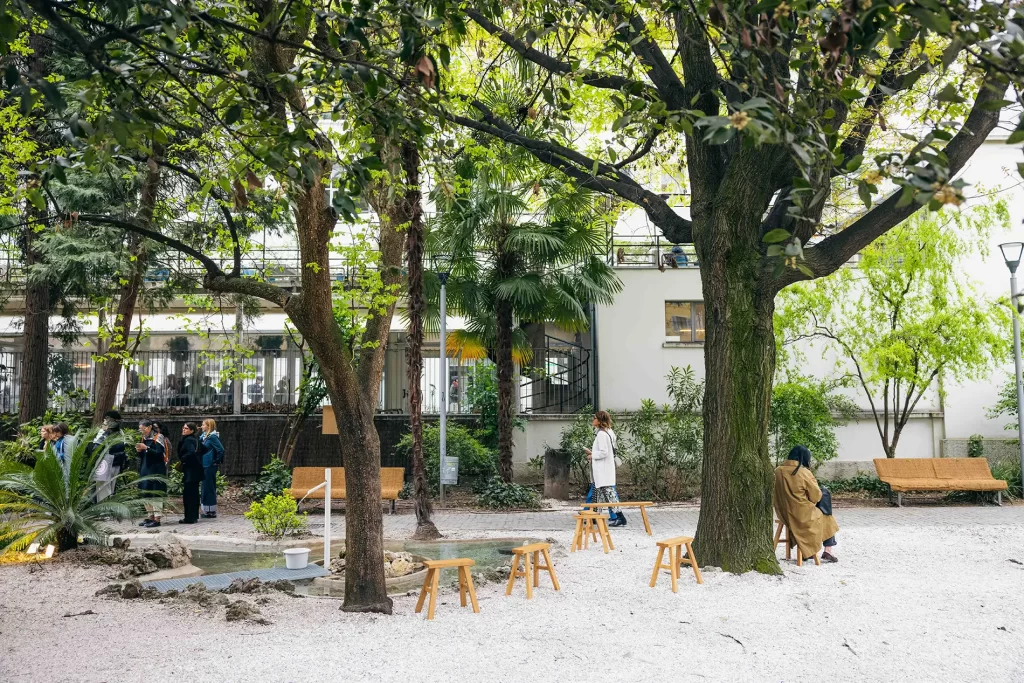
Meanwhile, things were particularly lively in Via Tortona, in primis in the legendary Superstudio, which celebrated its 25th anniversary under the motto "Happiness" - and showed everything that still had room between futuristic visions (Lexus), multi-sensory water features (Geberit) and a show of Thai creativity.
Collaborative design
Another worthwhile stopover in the Zona Tortona was the BASE cultural center's "The Convivial Laboratory" project. Here, social spaces are being rethought and the communal use of resources is being promoted. Installations such as Talamo and The Camp invited visitors to actively engage with the topics of community, protest and sustainable everyday life.
Dropcity has also set itself the task of developing alternative perspectives on design and architecture in times of global systemic crises. Initiated by Andrea Caputo, the center, located in the interconnected tunnels behind Milan's main train station, presented the exhibition "Prison Times - Spatial Dynamics of Penal Environments", a critical and sensitive reflection on the establishment of prisons around the world.

Up on the tracks of Milano Centrale, the "Arlecchino" train designed by Gio Ponti and Giulio Minoletti was waiting: visitors could take a seat in it at "Prada Frames" - an interdisciplinary symposium curated annually by Formafantasma for the Salone del Mobile. This year's thematic journey "In Transit" led to global transportation and logistics systems - and their influence on the environment, society and design culture.
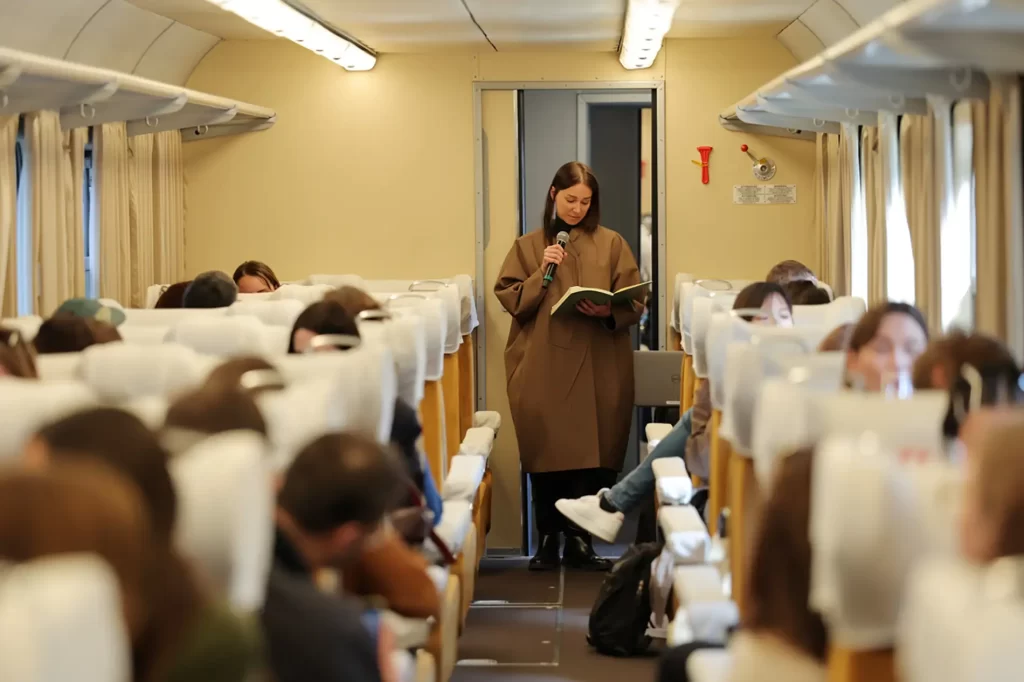
Social responsibility
Formats and concepts such as these make it clear that design has long been more than just the creation of objects, surfaces or materials. It sees itself as a medium, a mirror and a field of experimentation for social change. This year's edition of the Milan Salone showed an industry that is becoming increasingly aware of its responsibility for the environment, society and culture. The Salone should not squander this through increasing commercialization and the influence of large luxury brands - especially not at the expense of independent designers and manufacturers. The discrepancy between aesthetic standards, ethical self-image and market reality continues to exist. And this is precisely where the task of the coming years lies: understanding design as an active tool for a sustainable future worth living.
You can find articles on other exciting design events here ...
